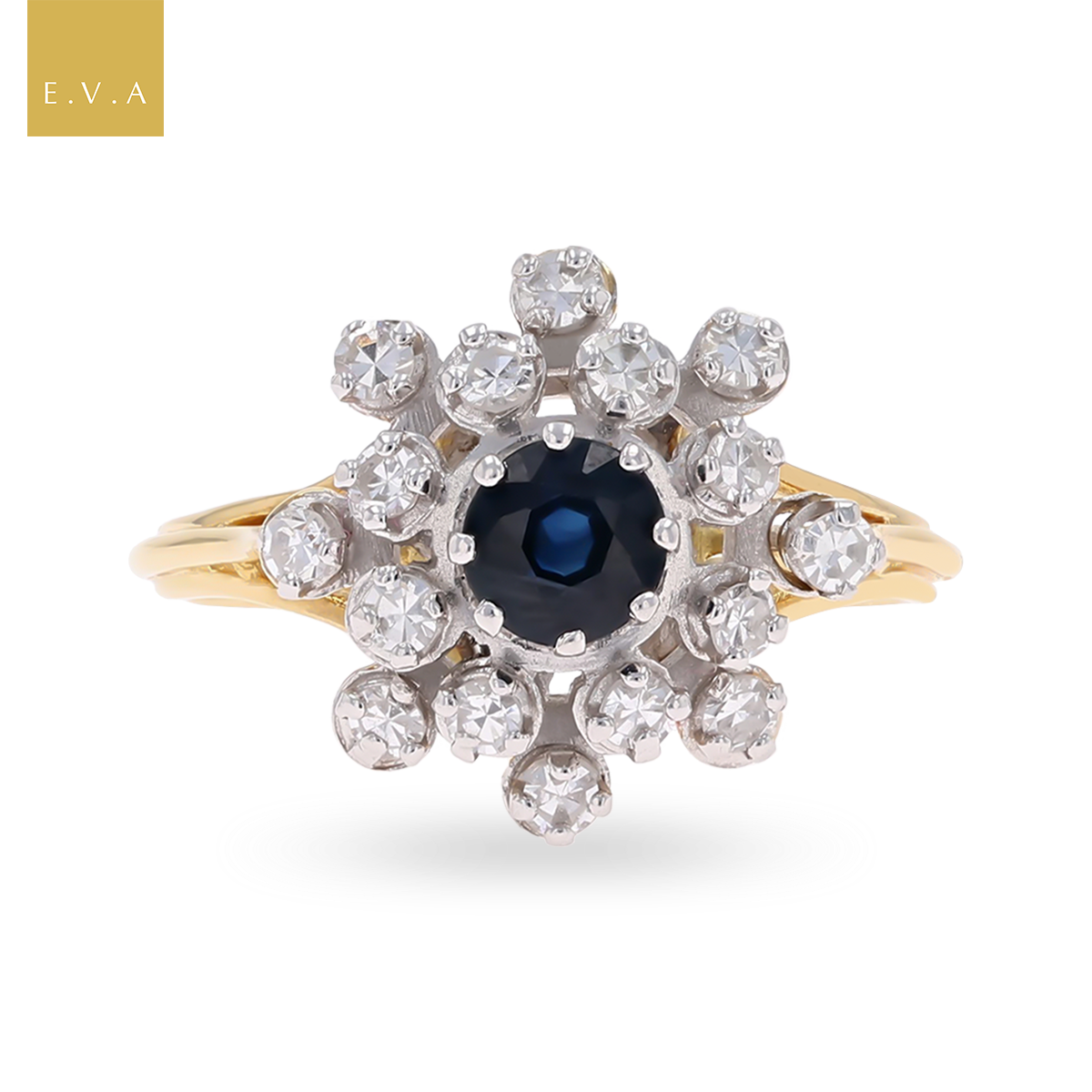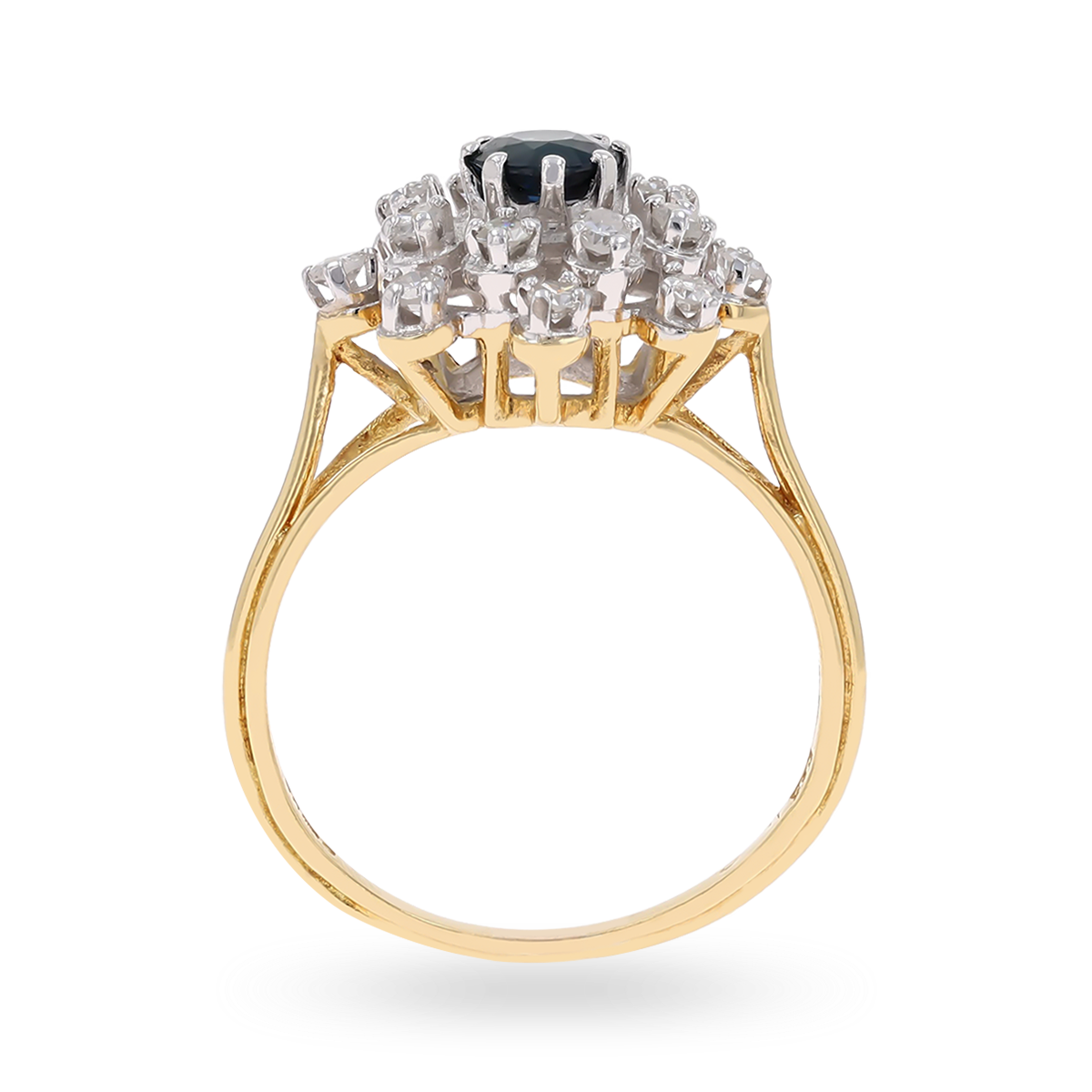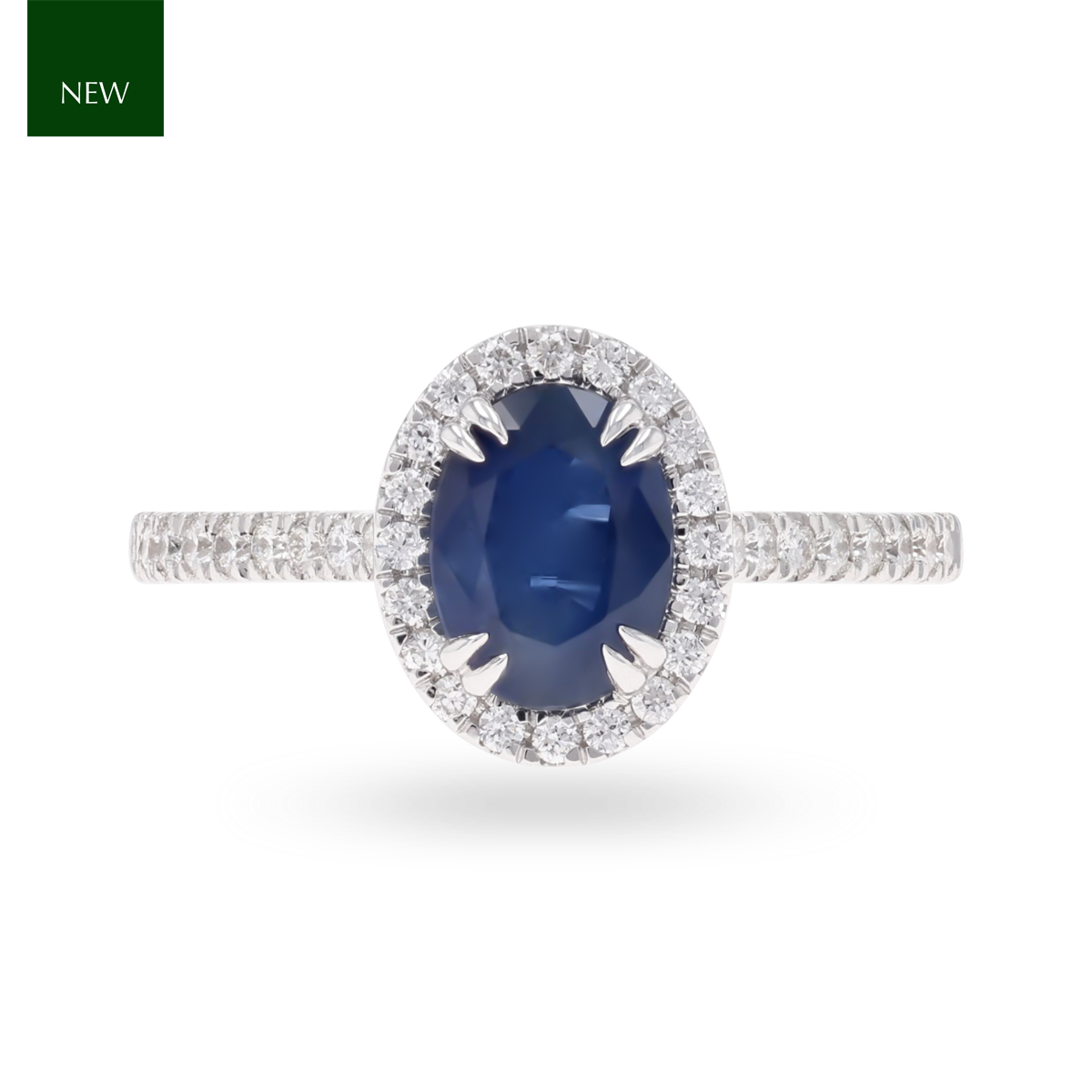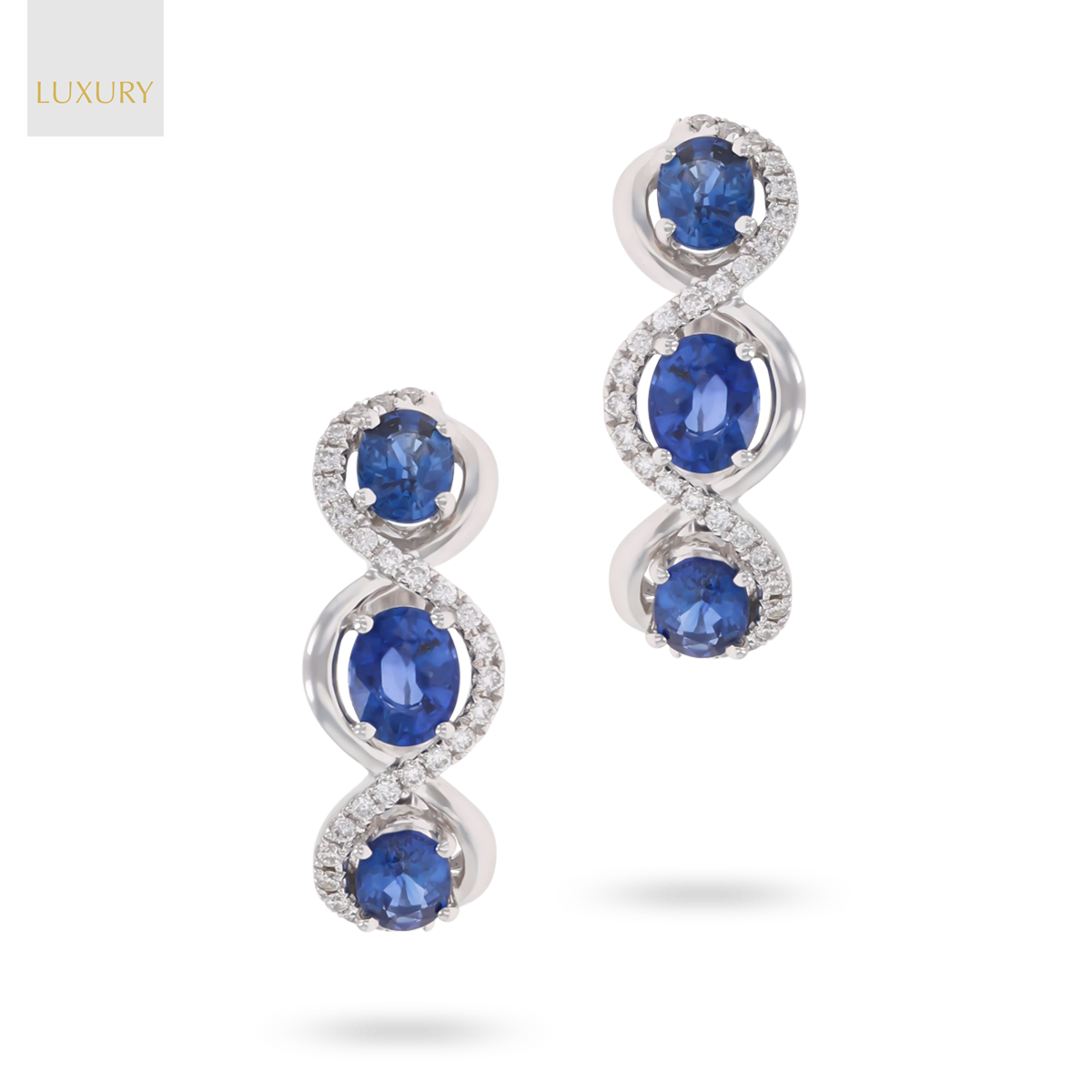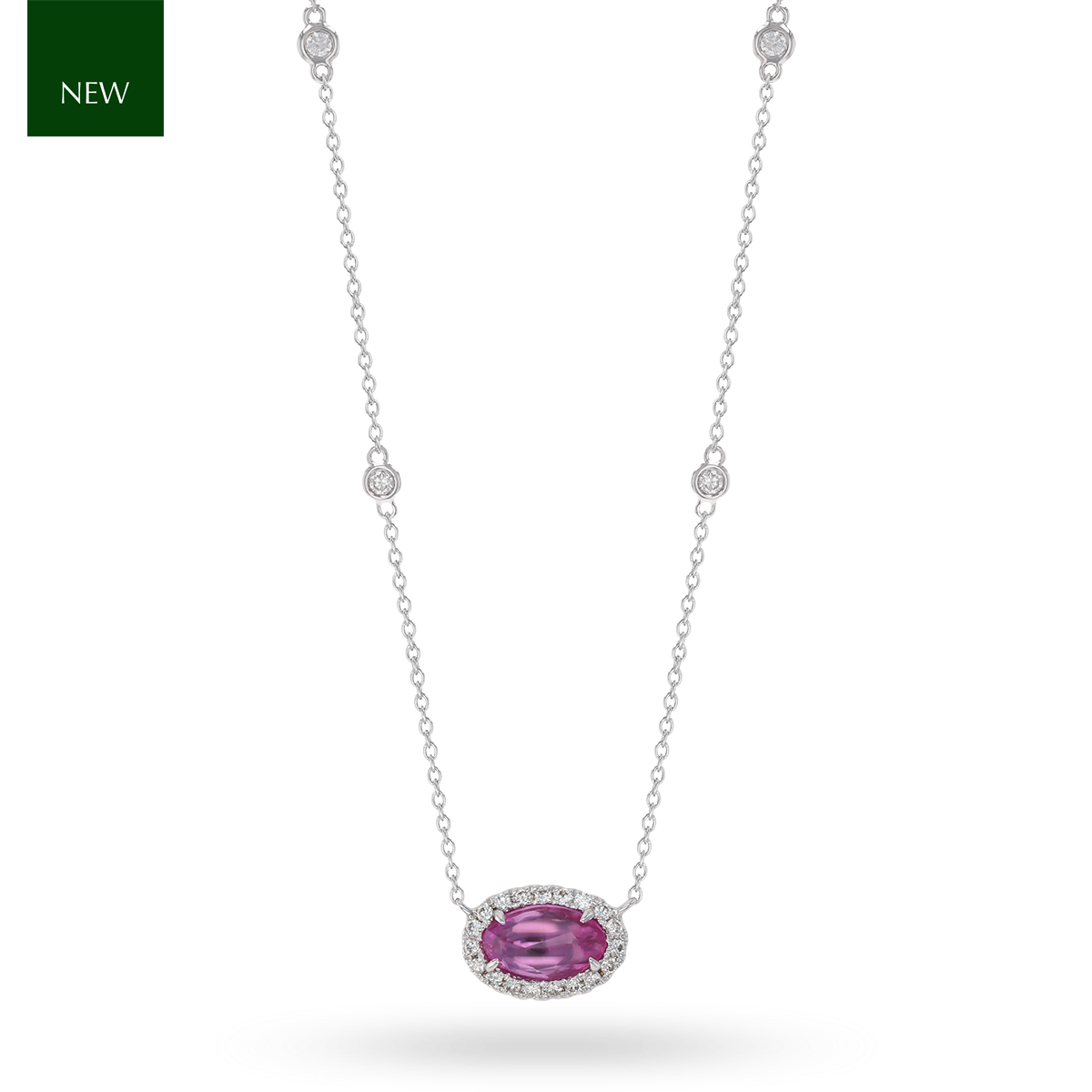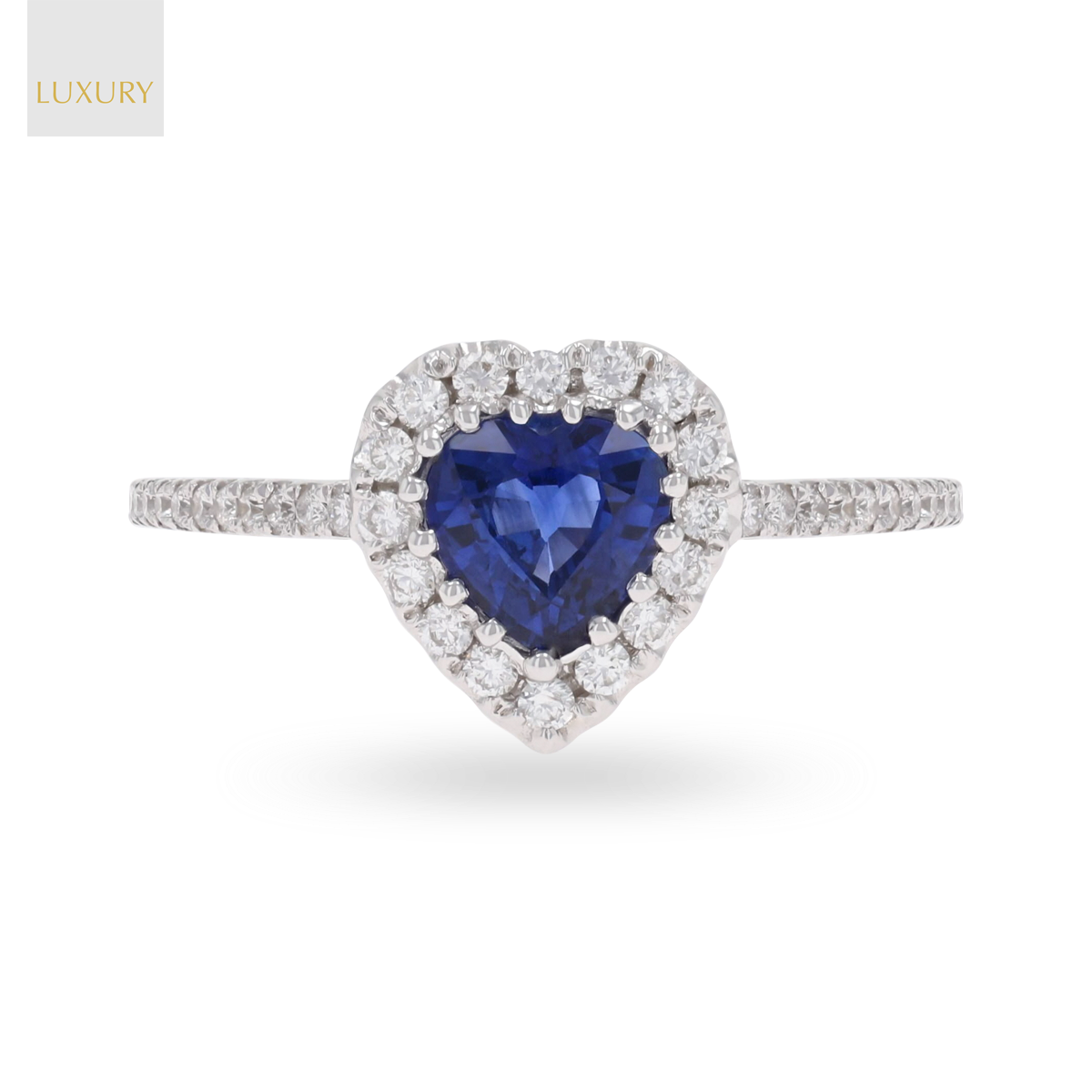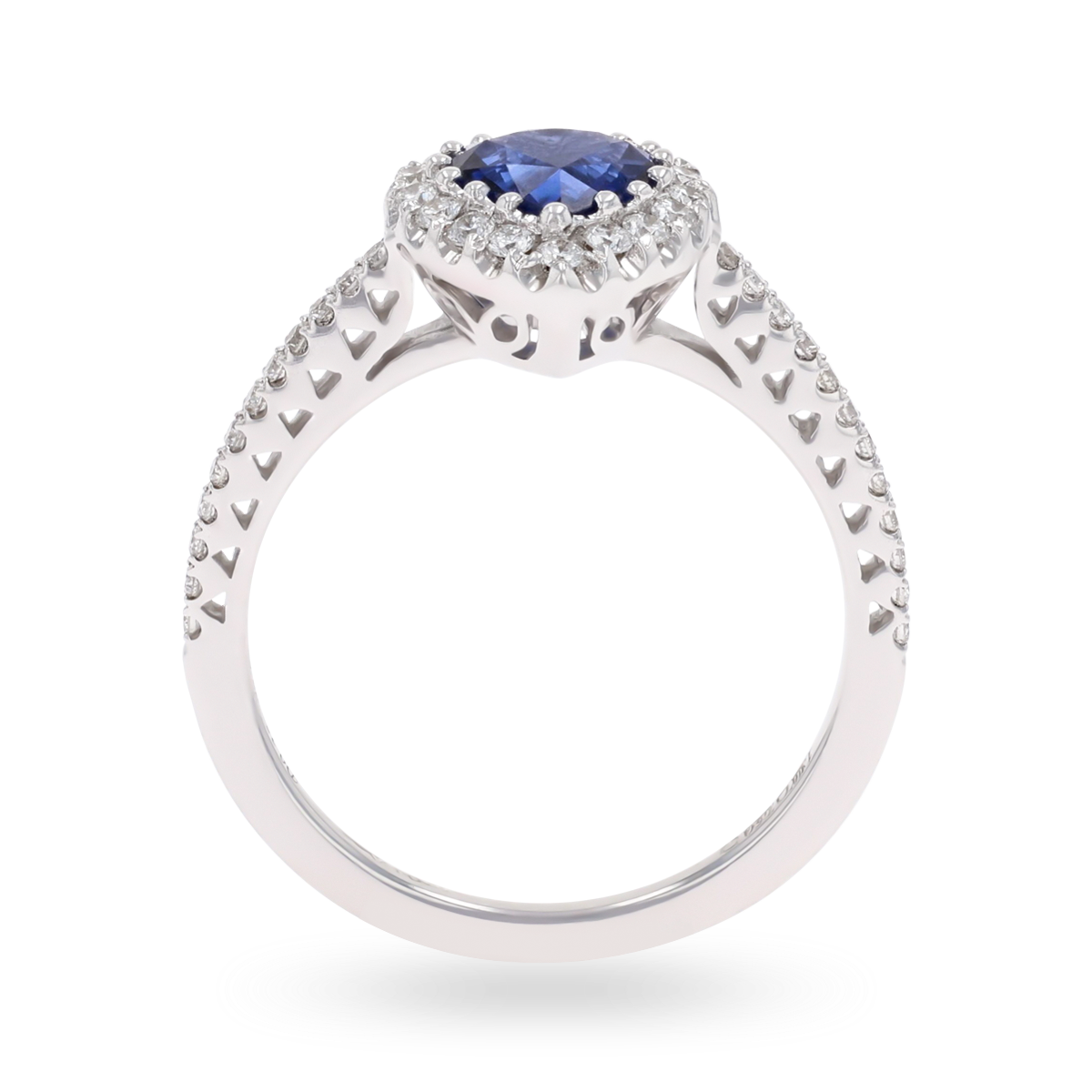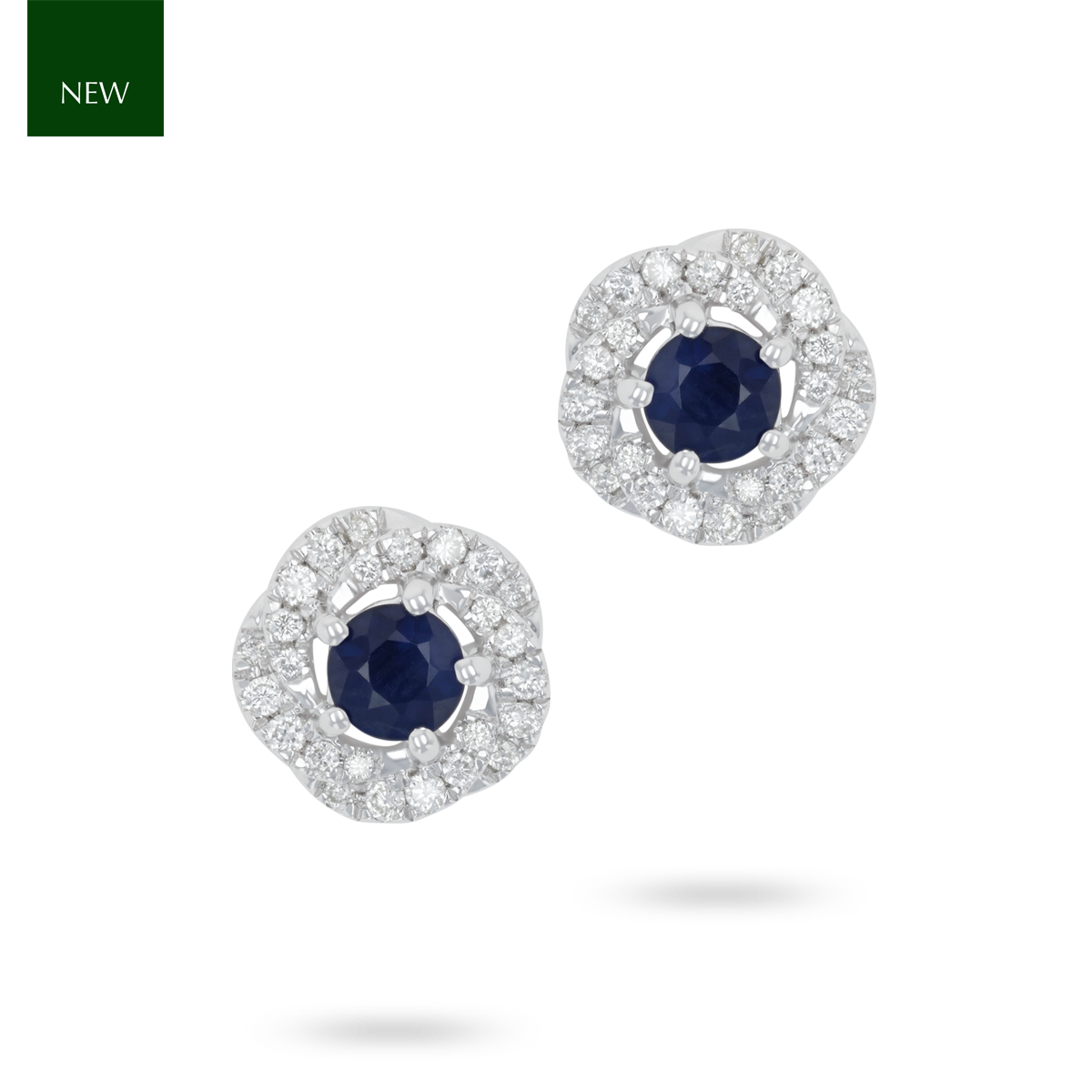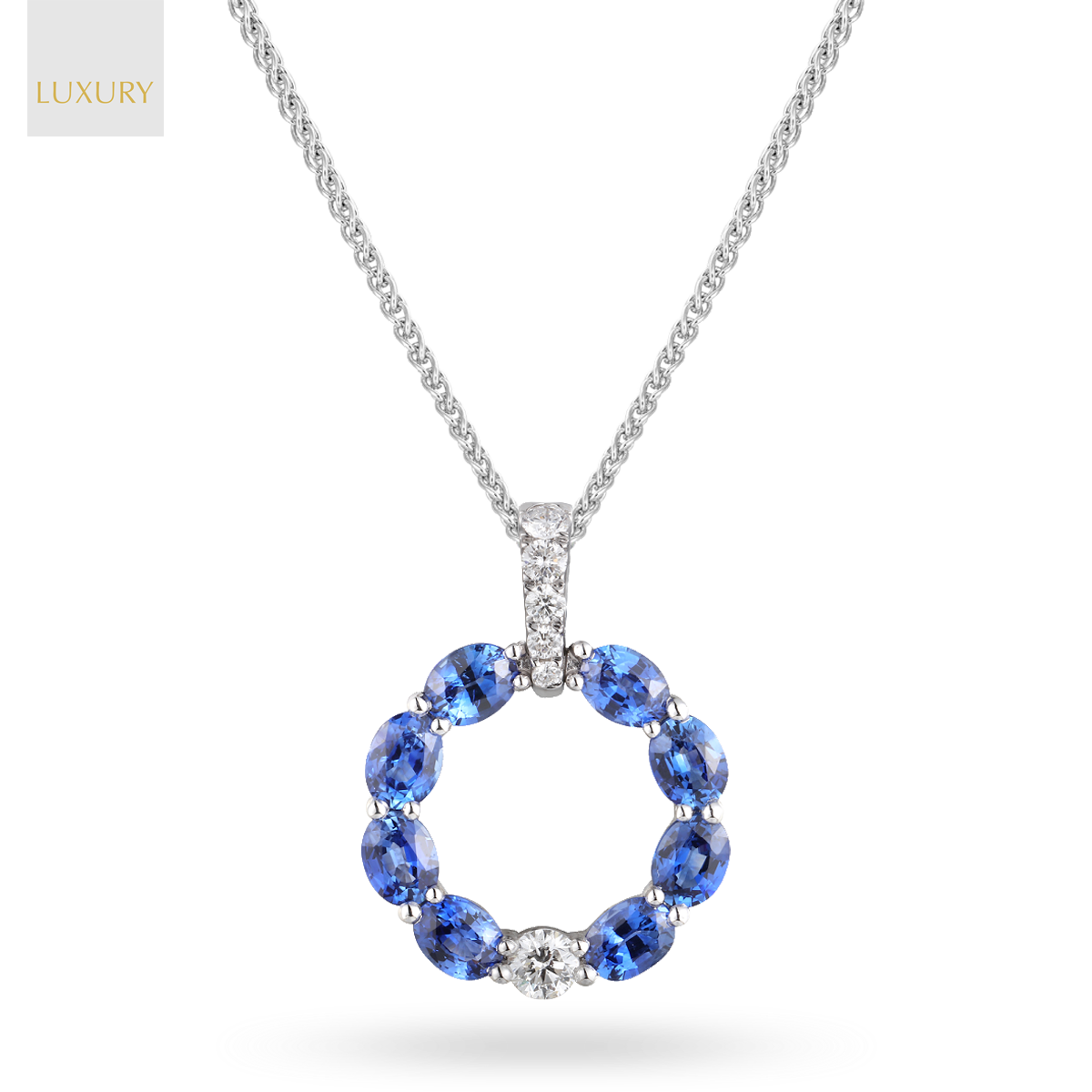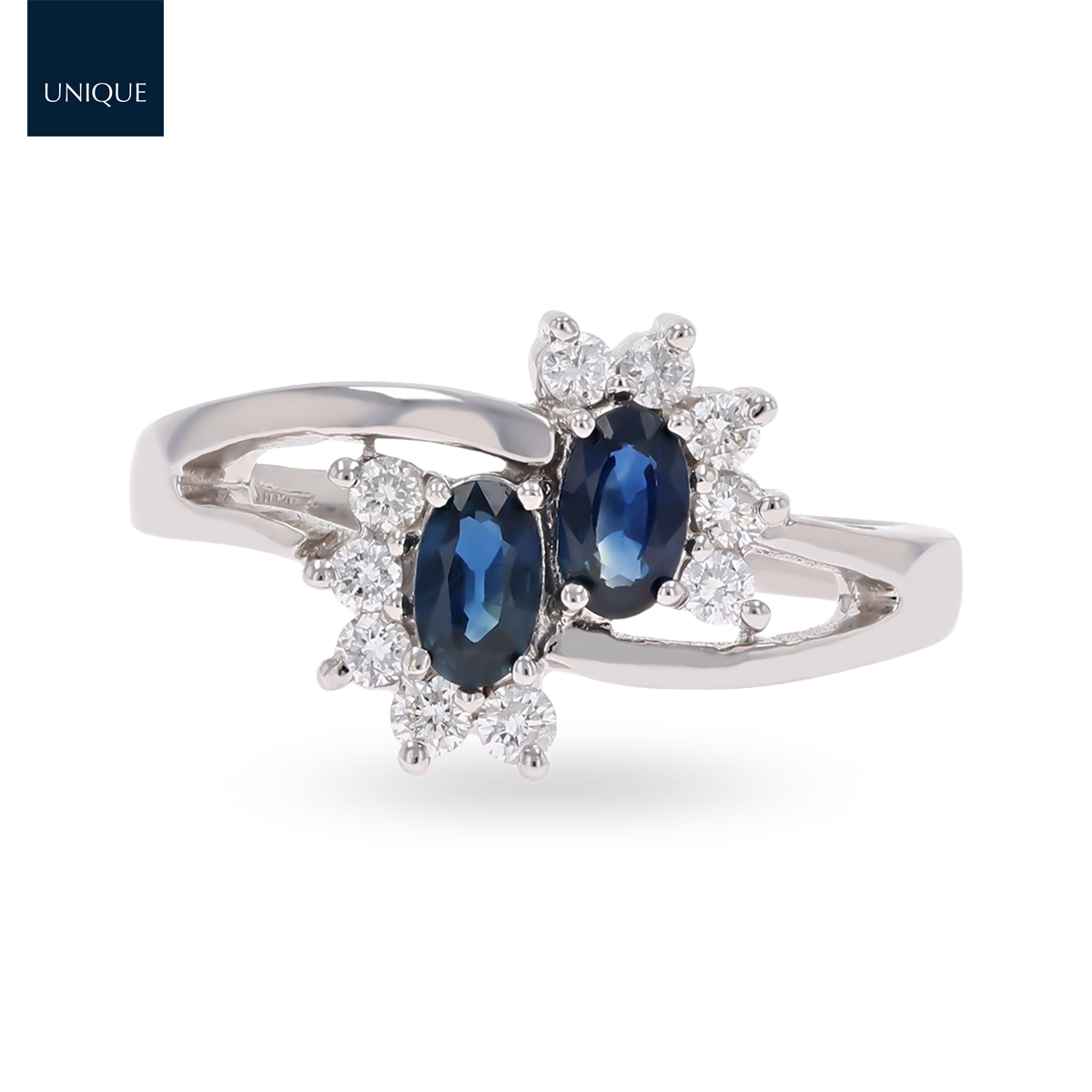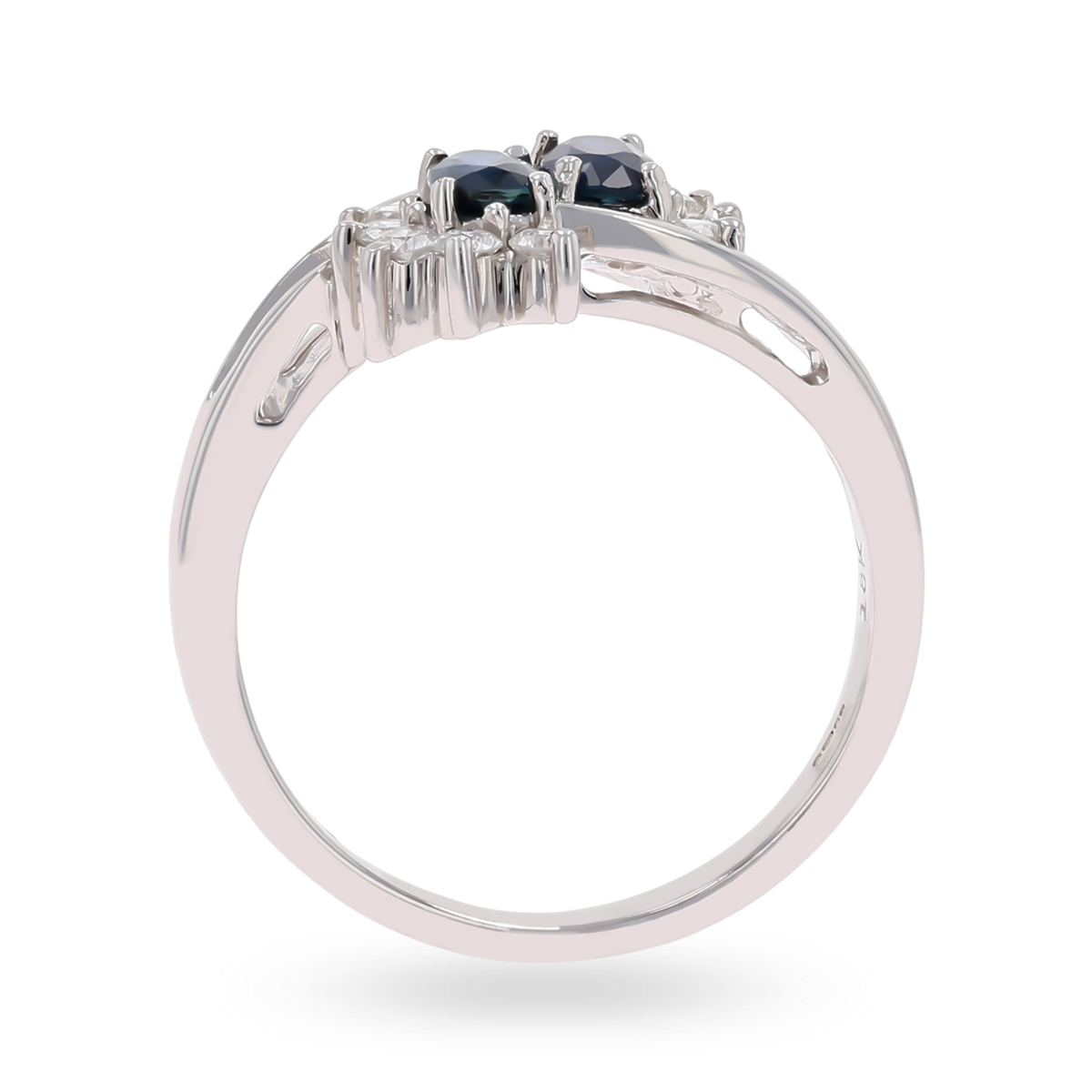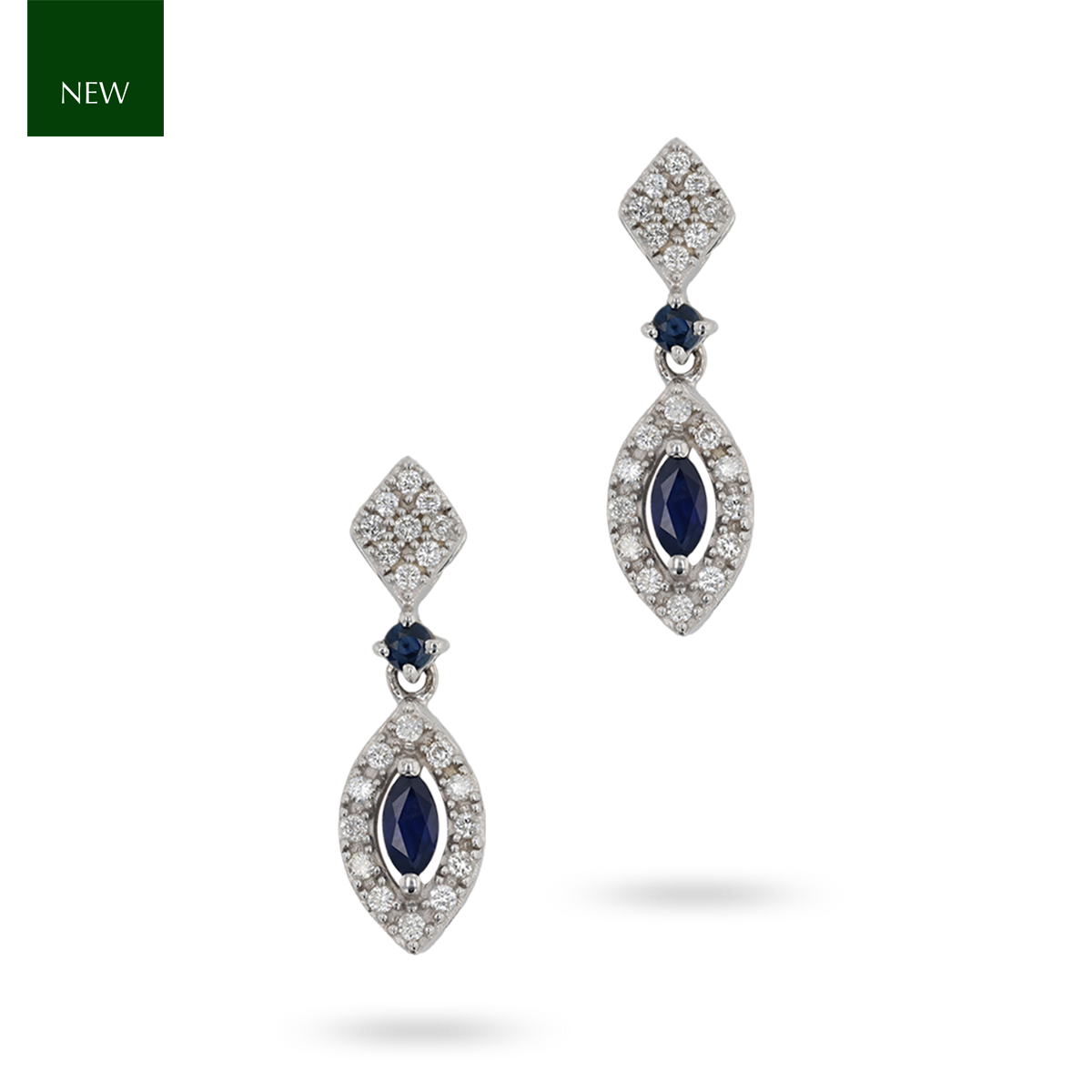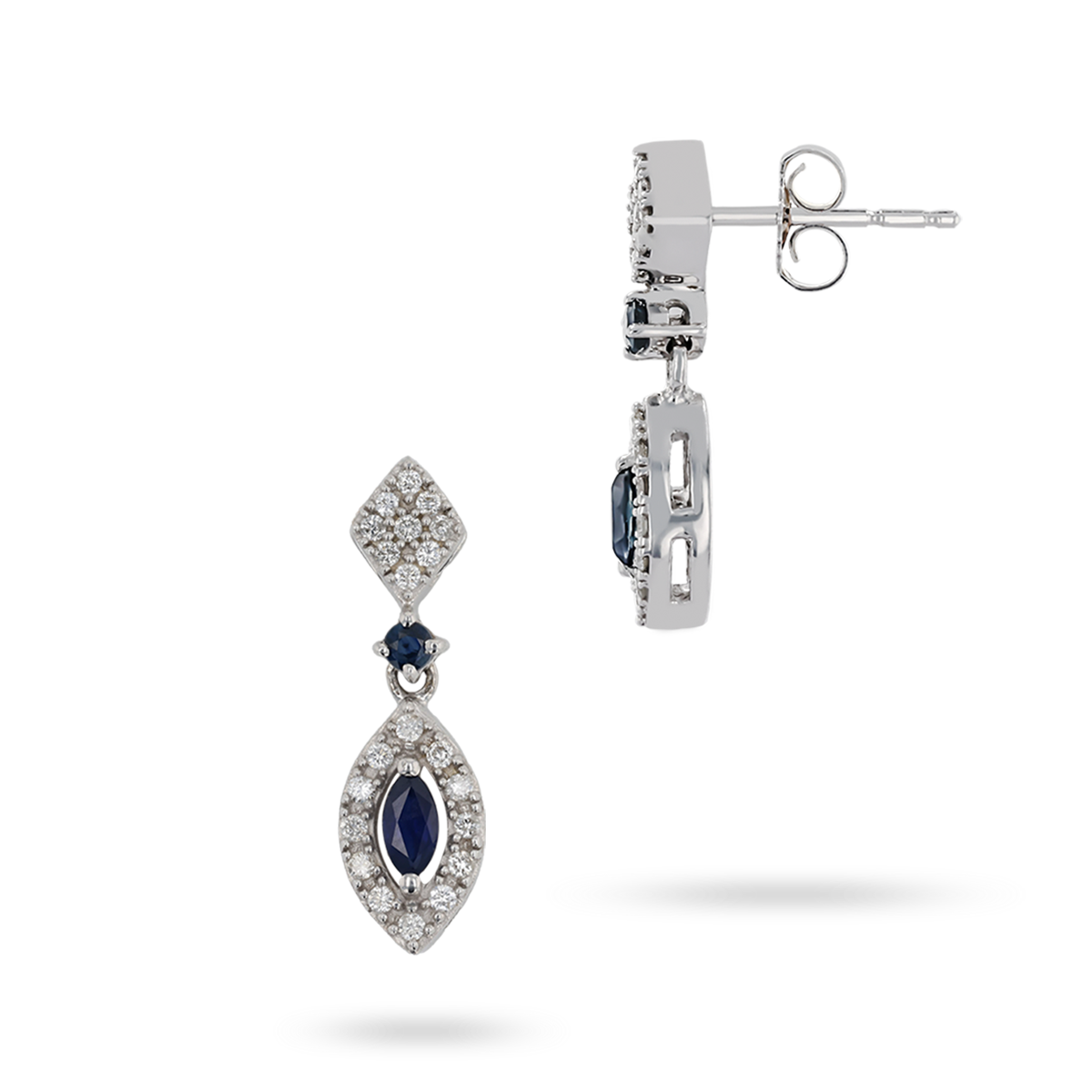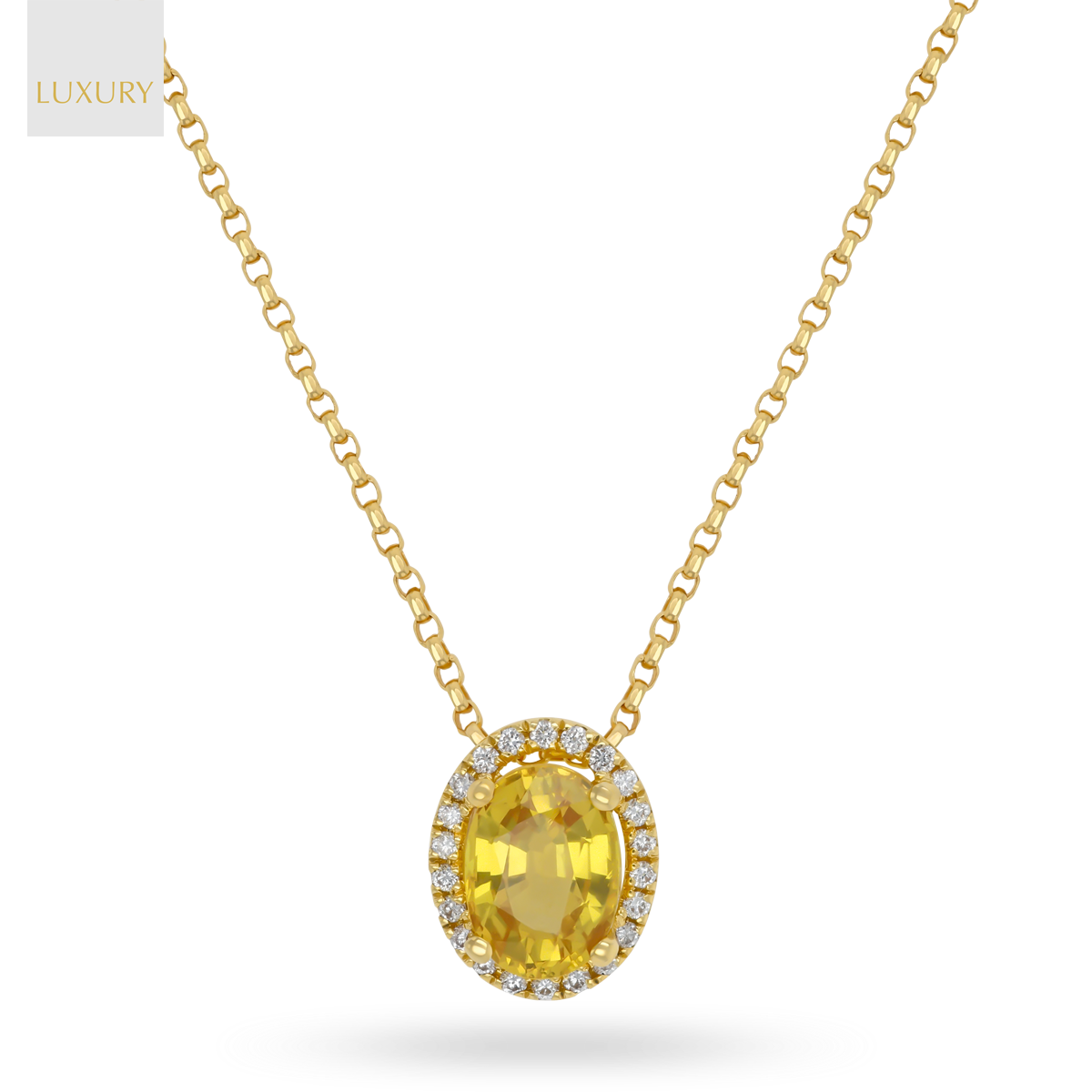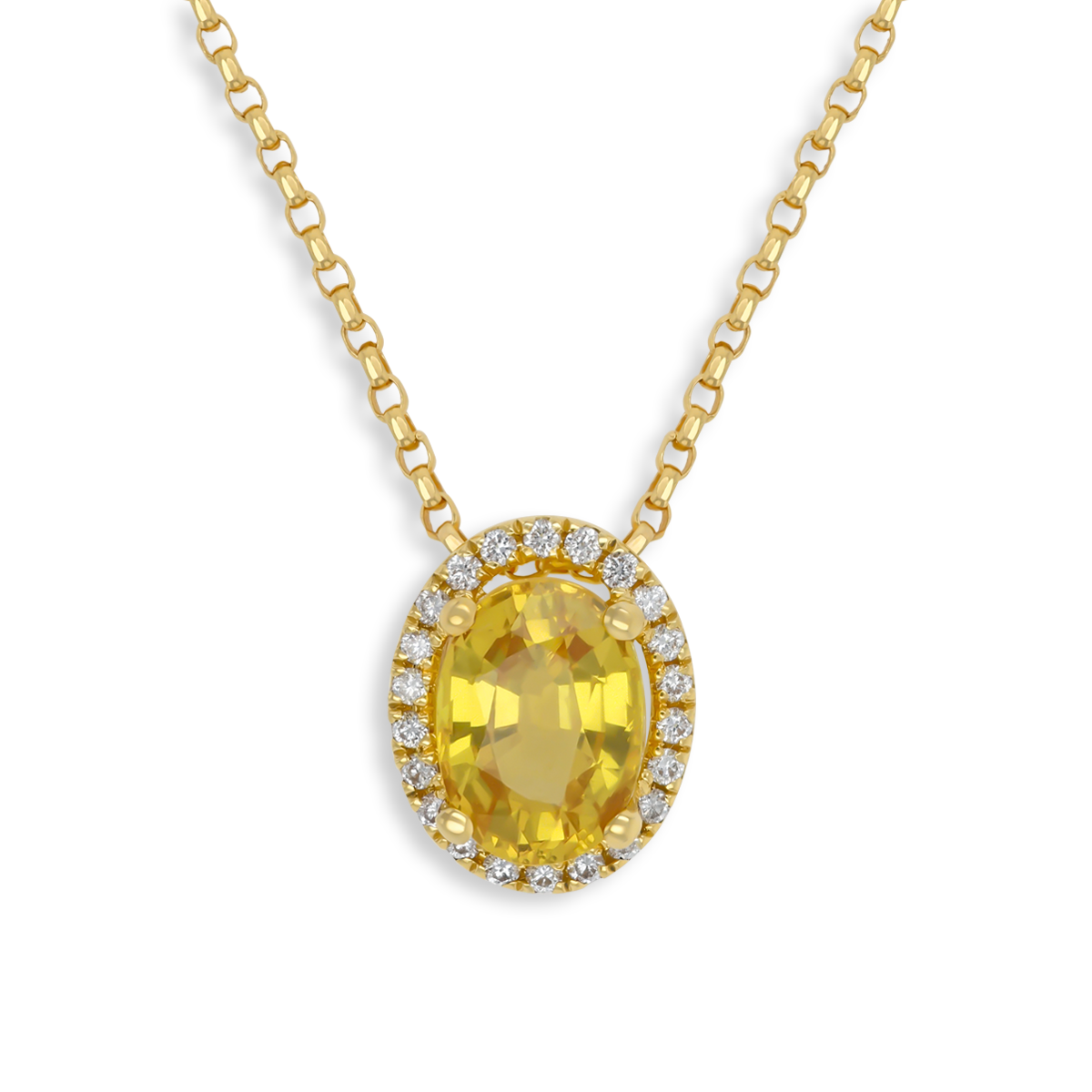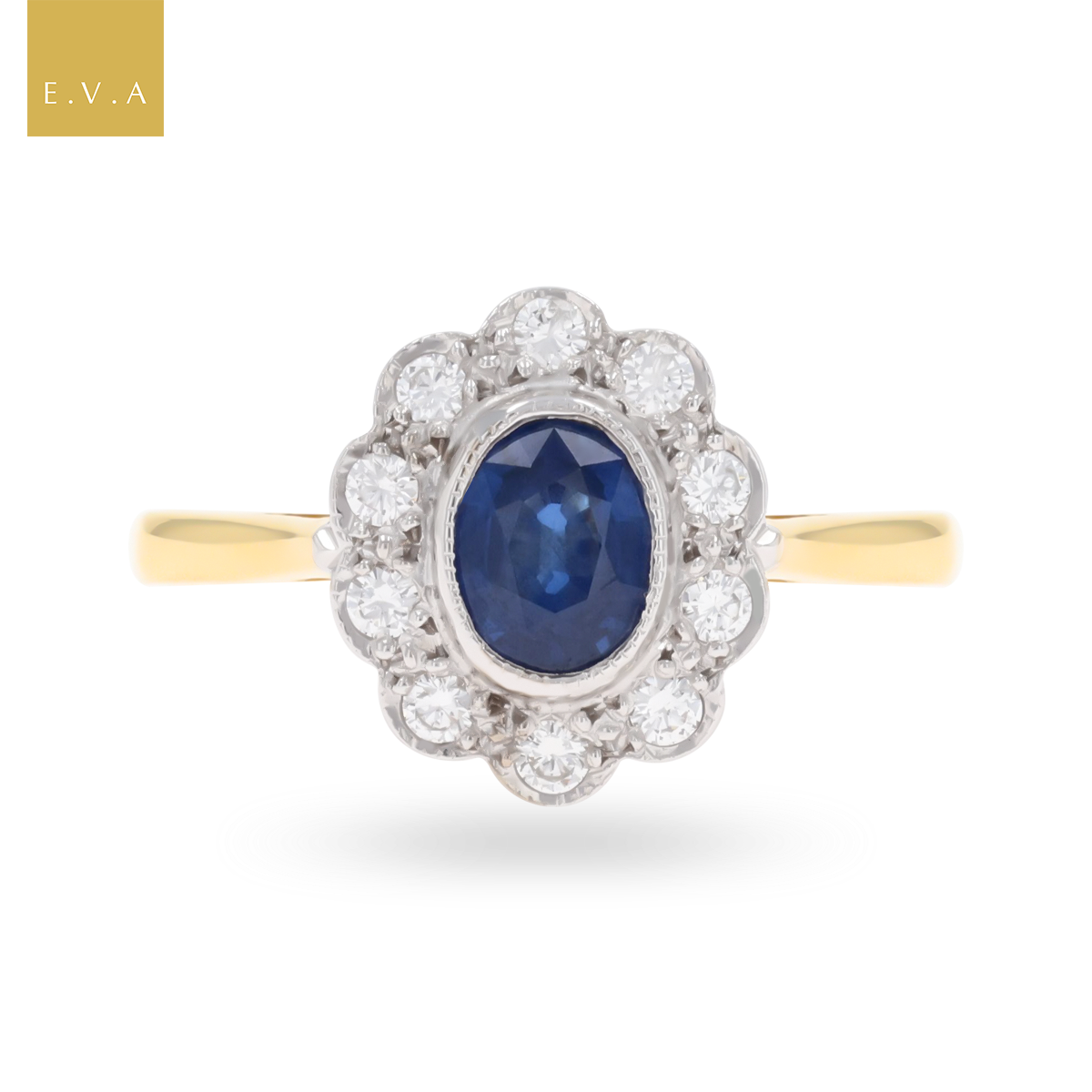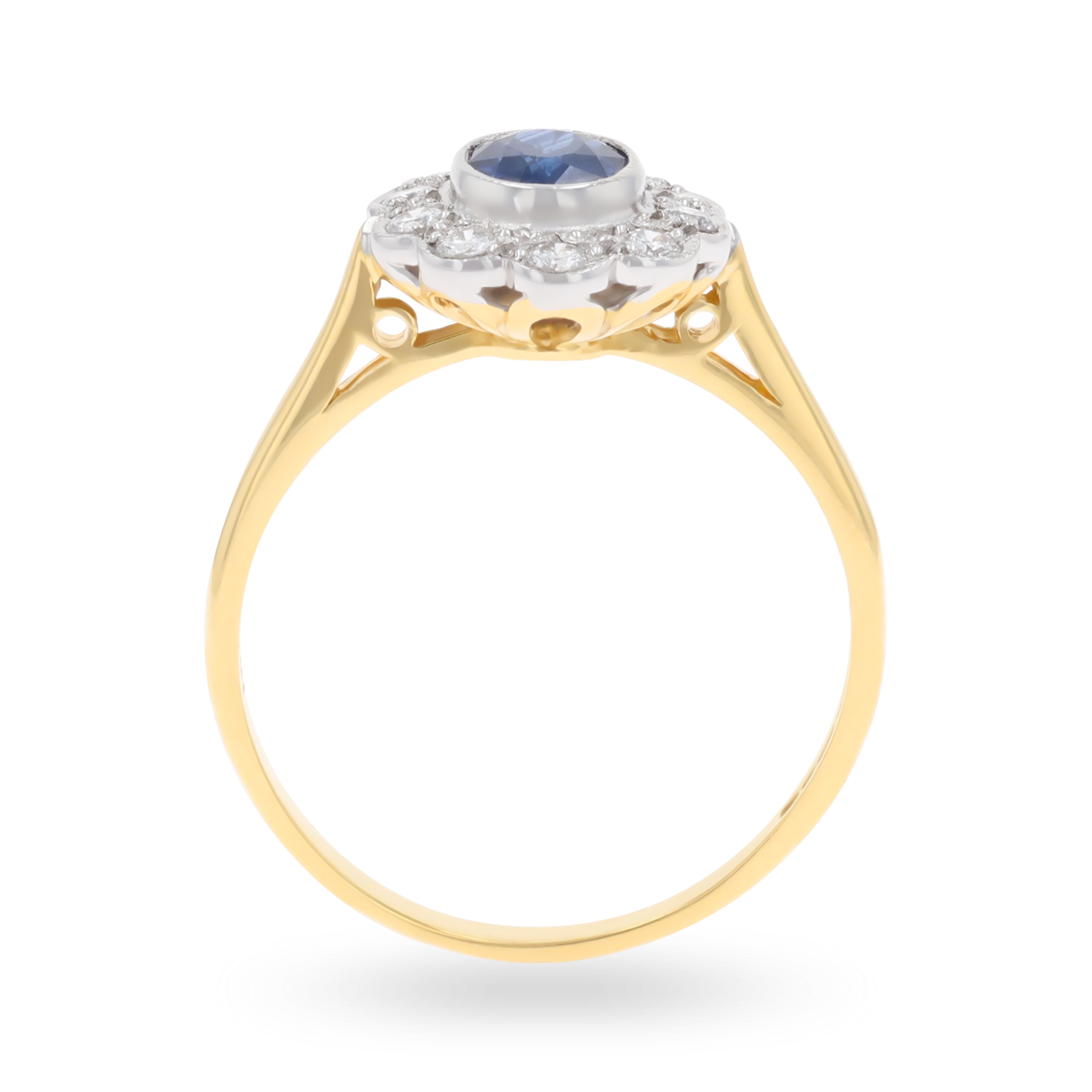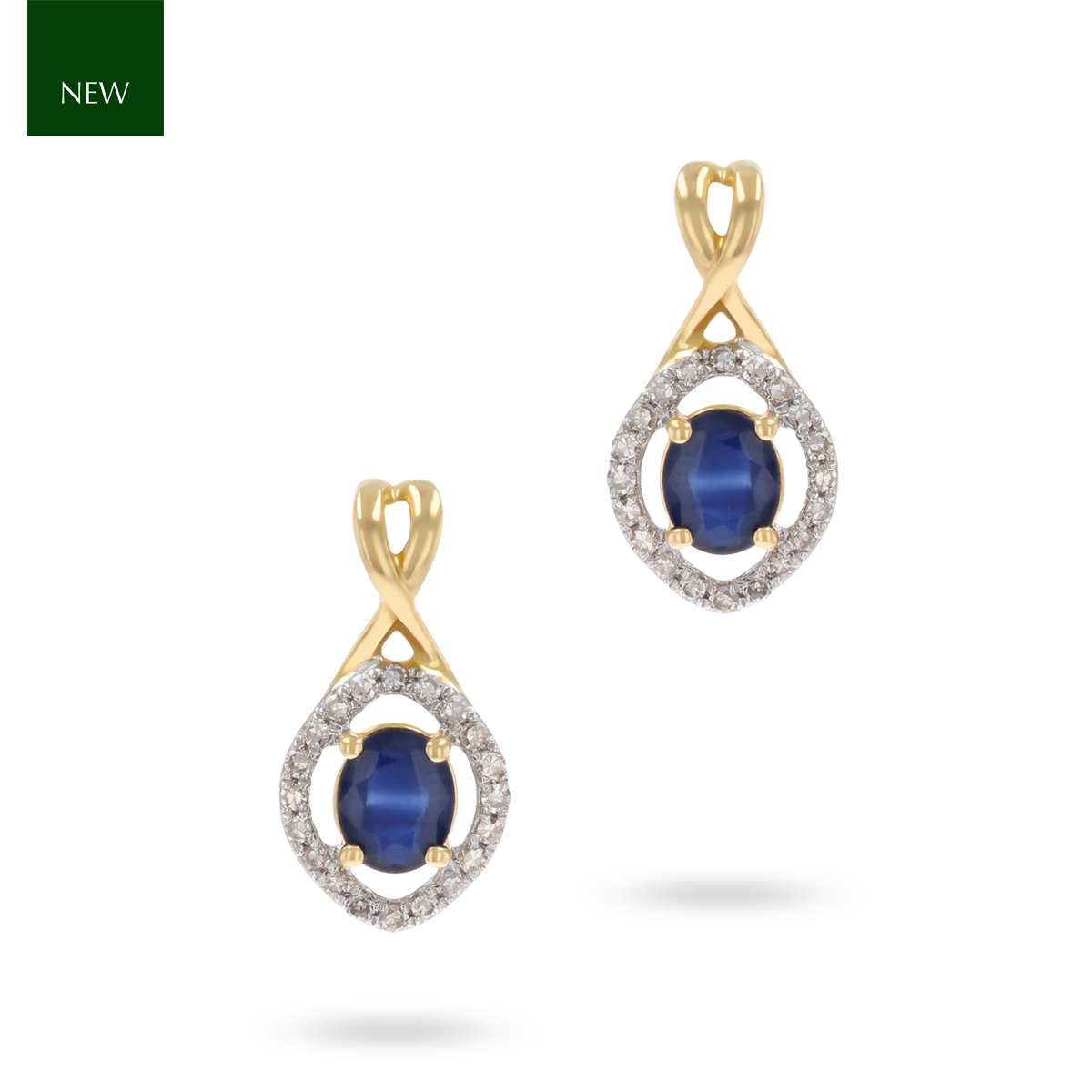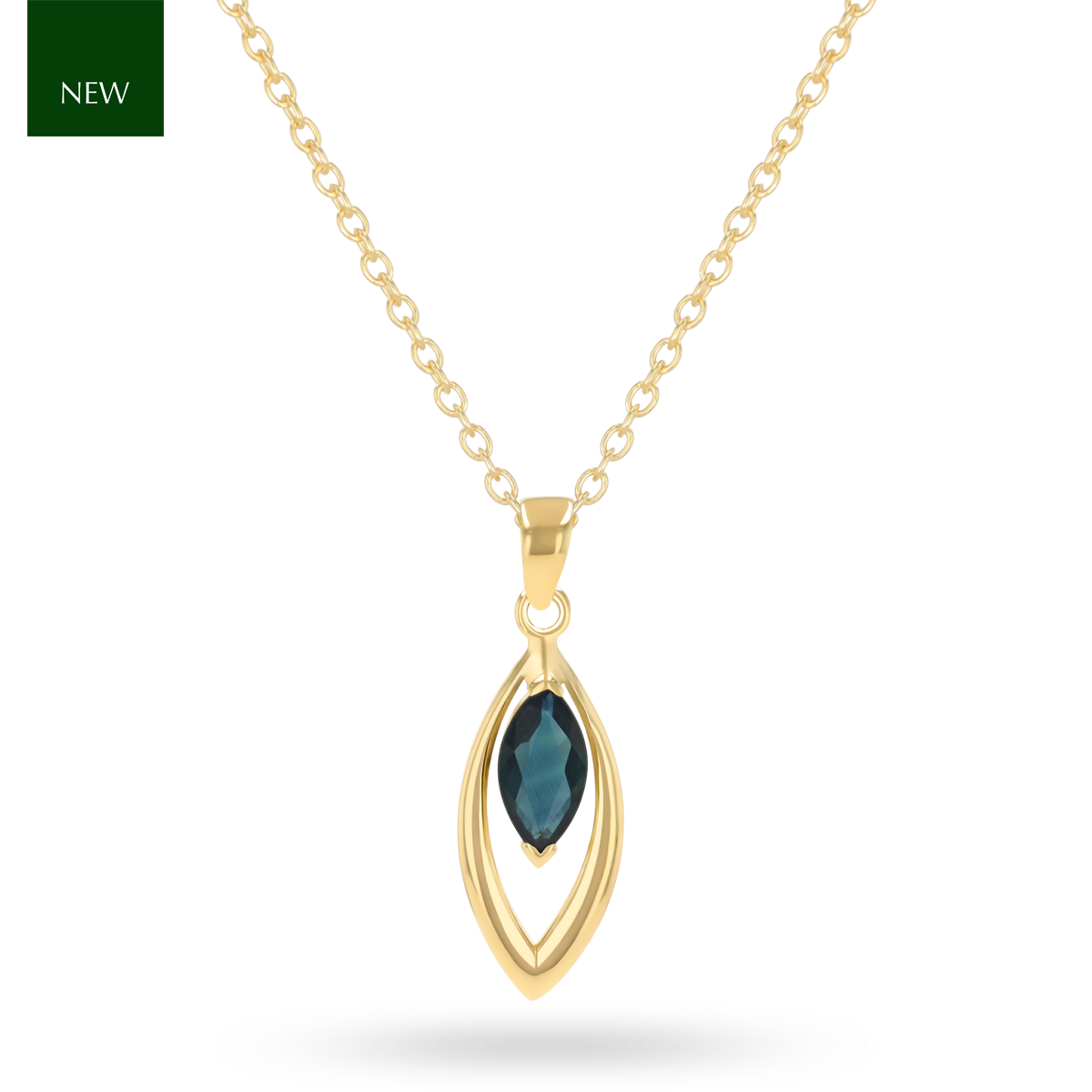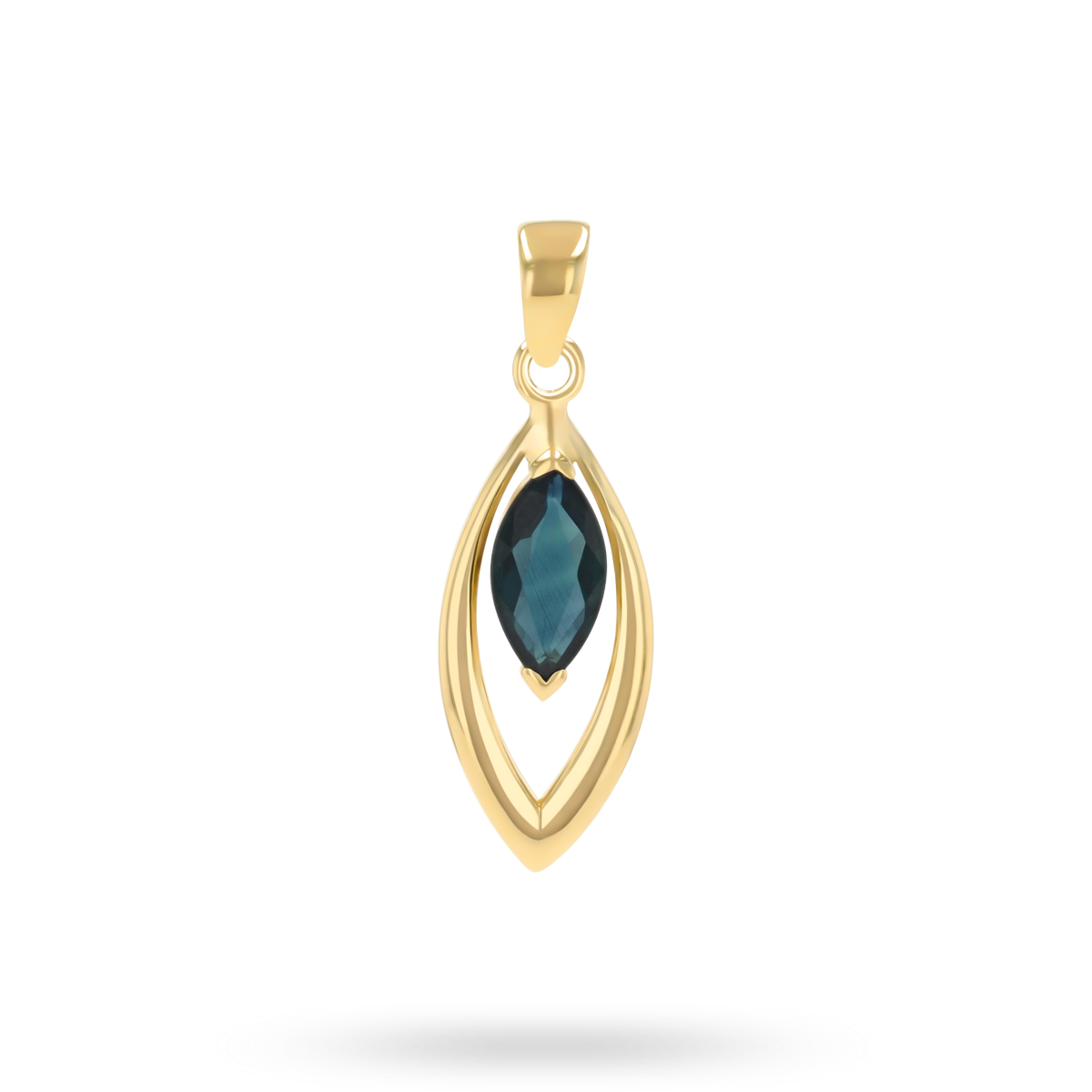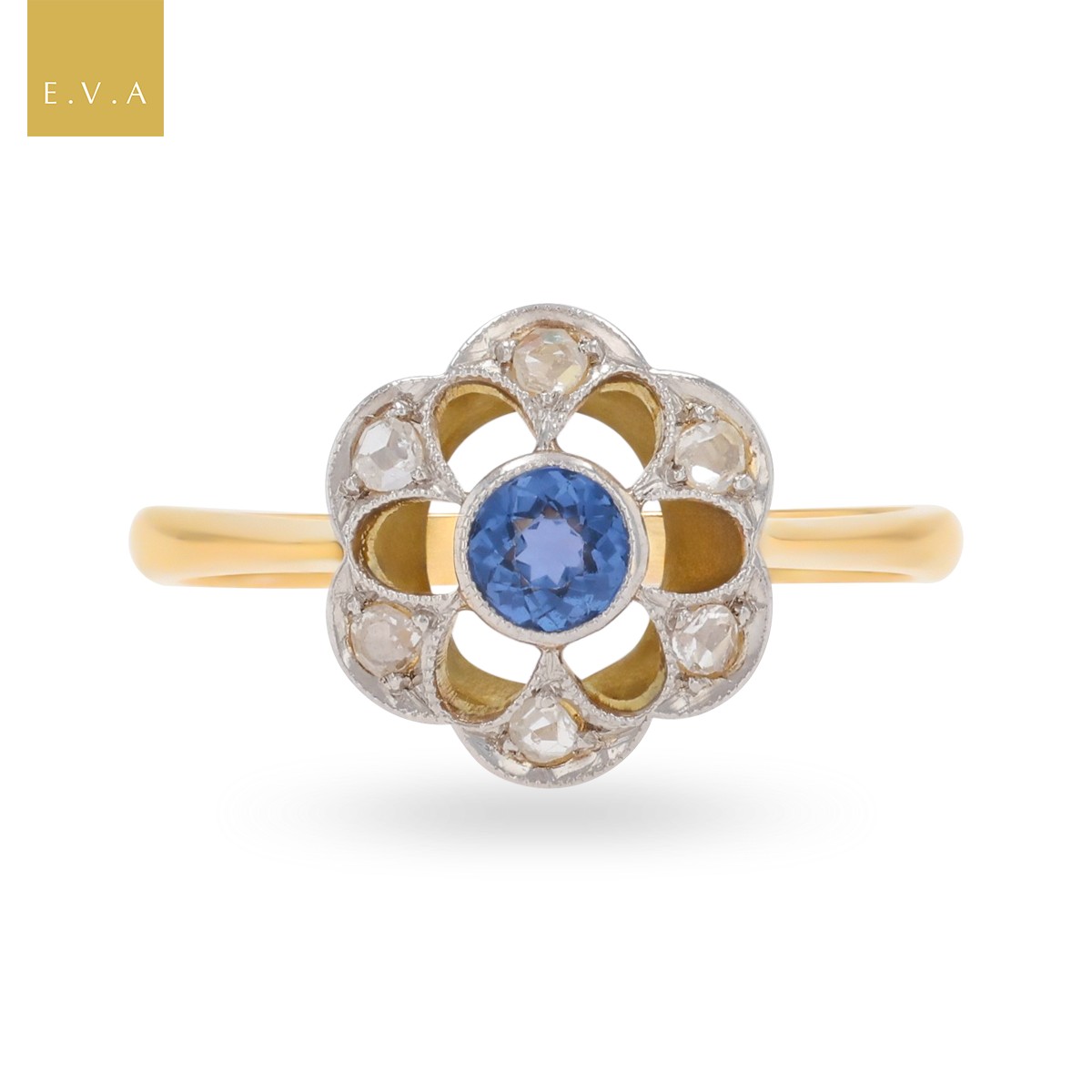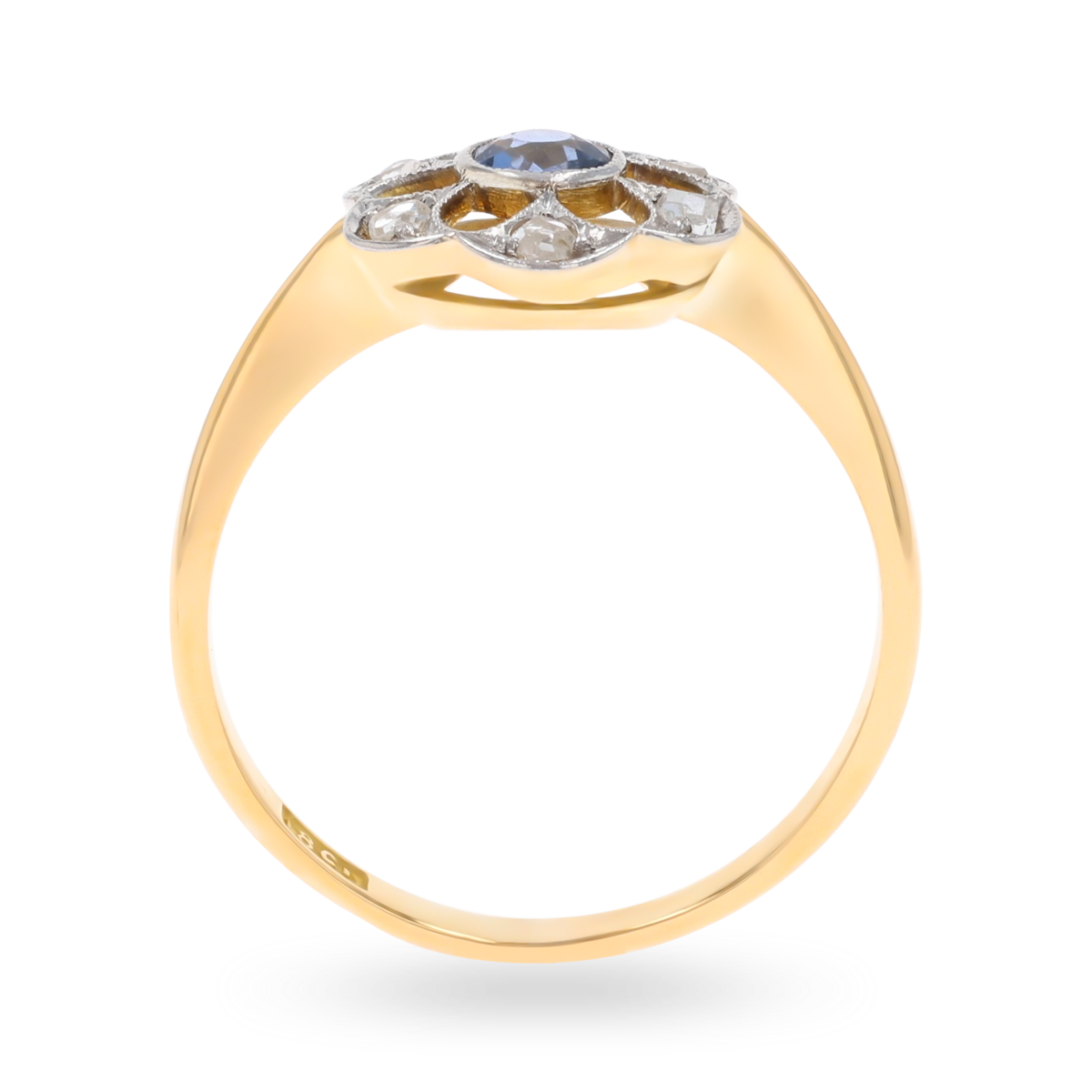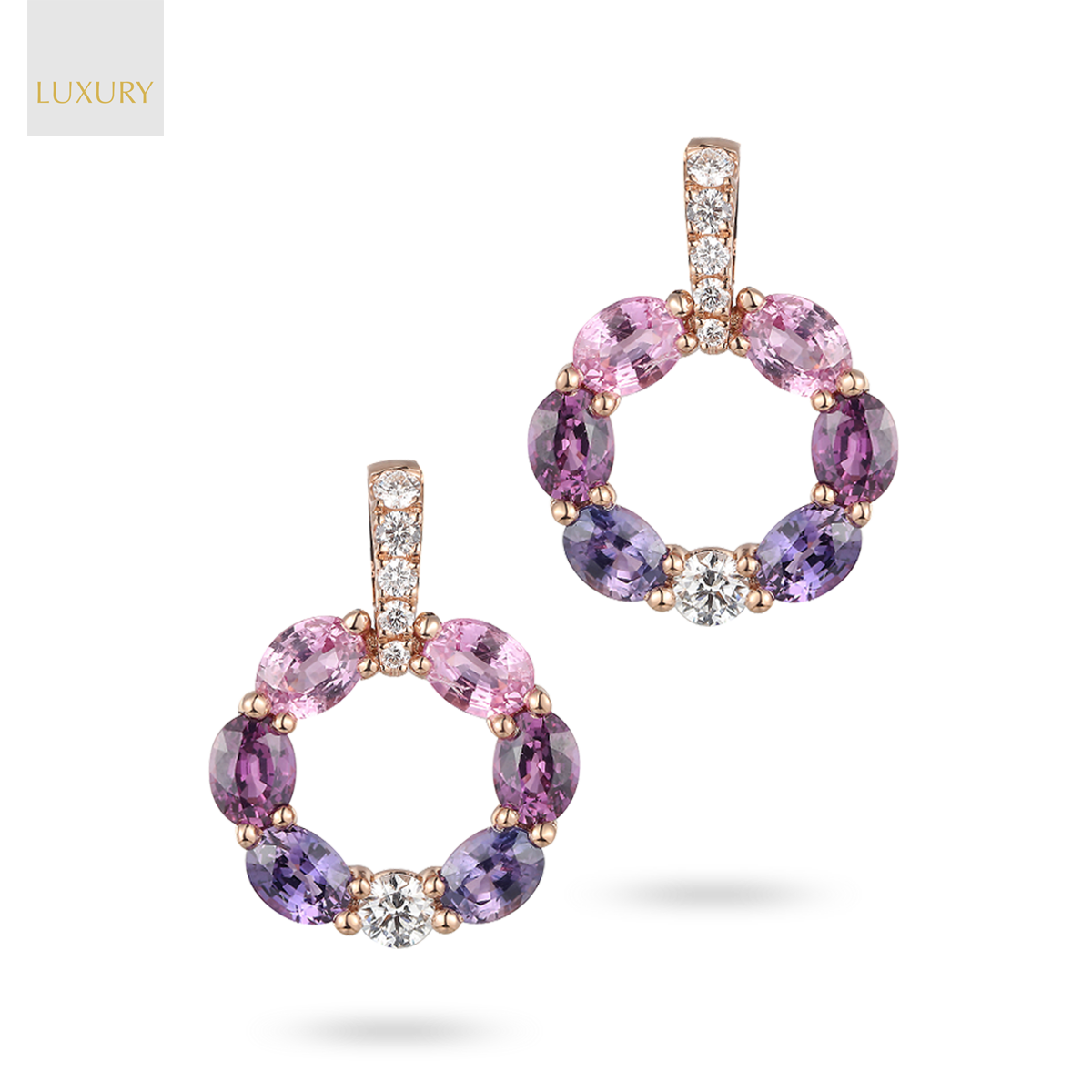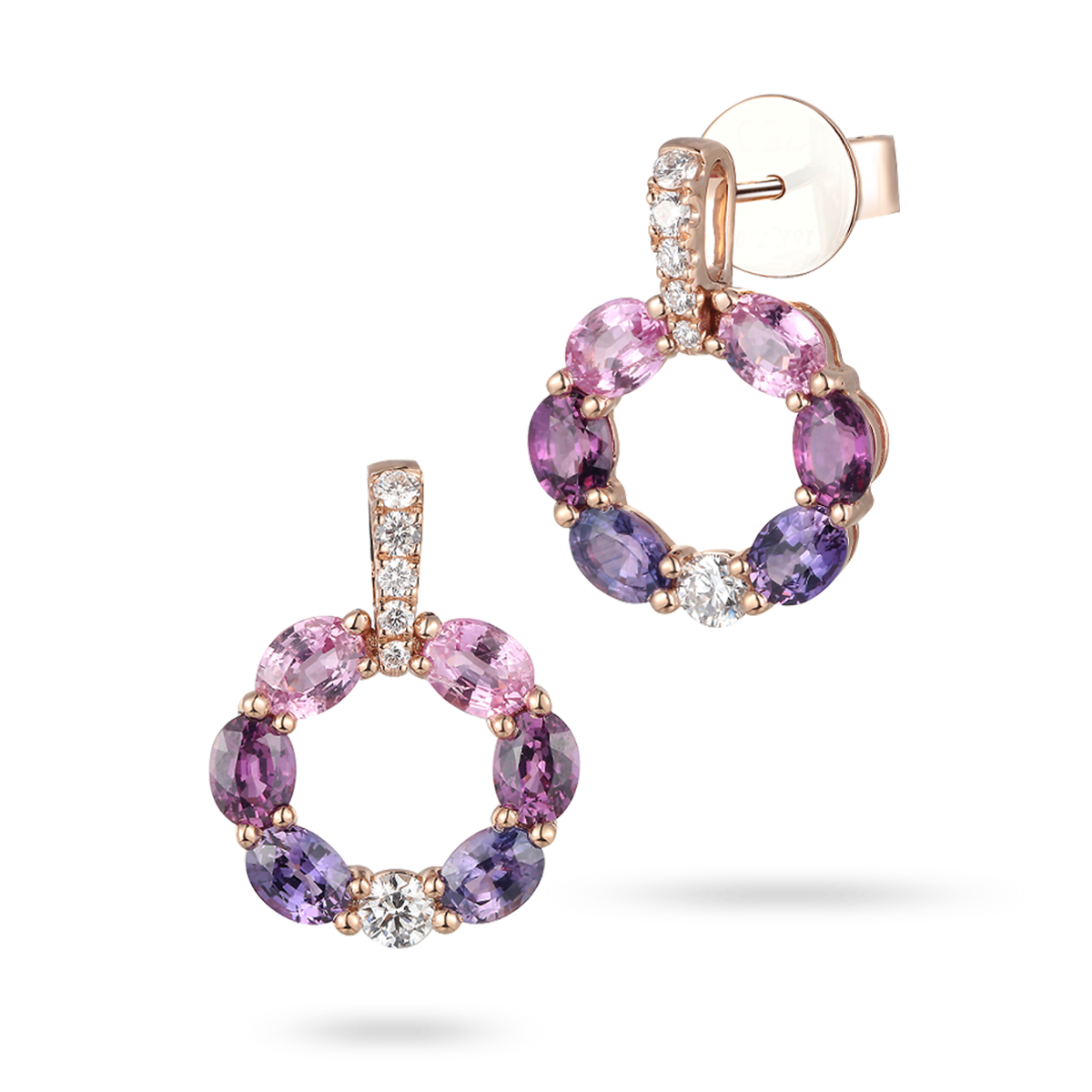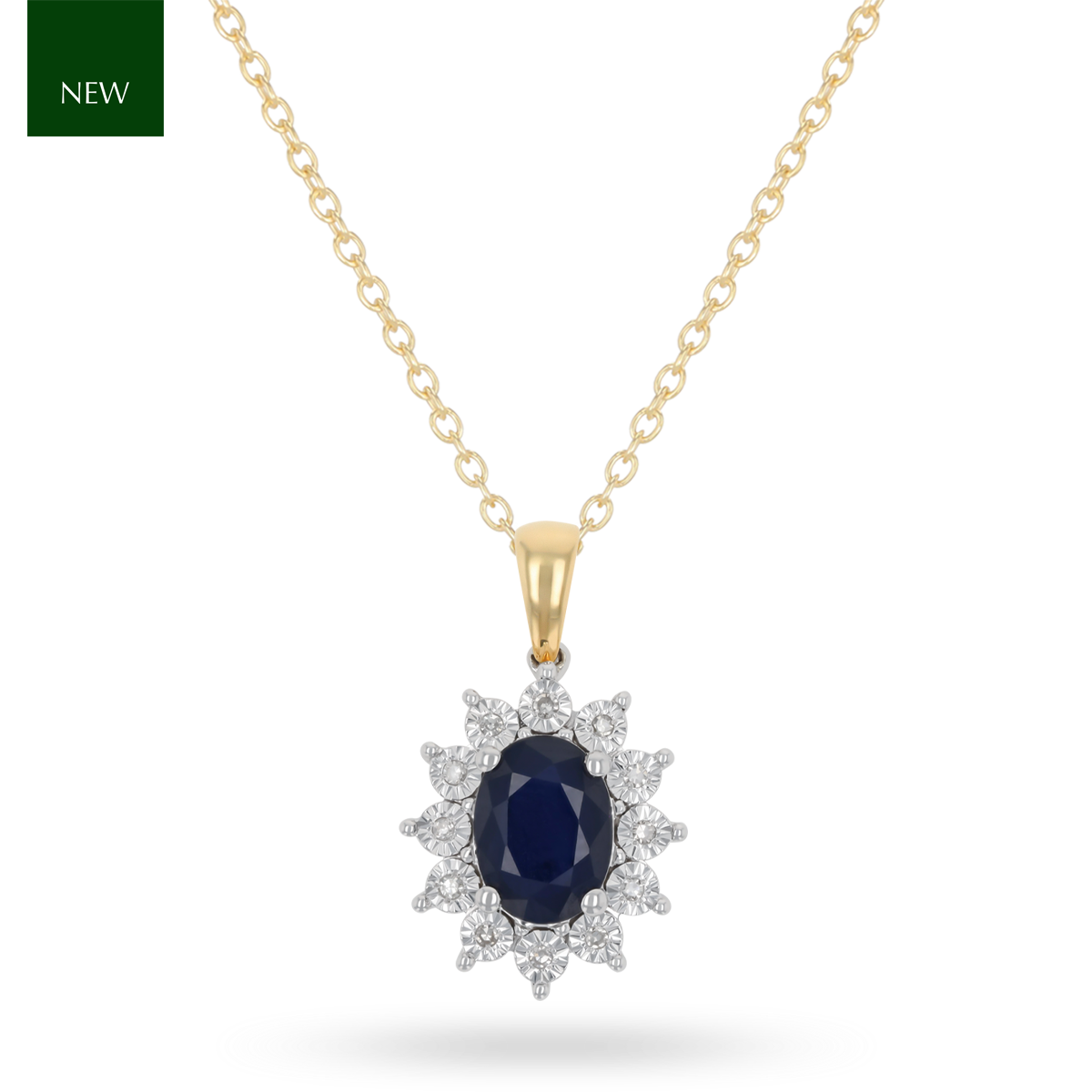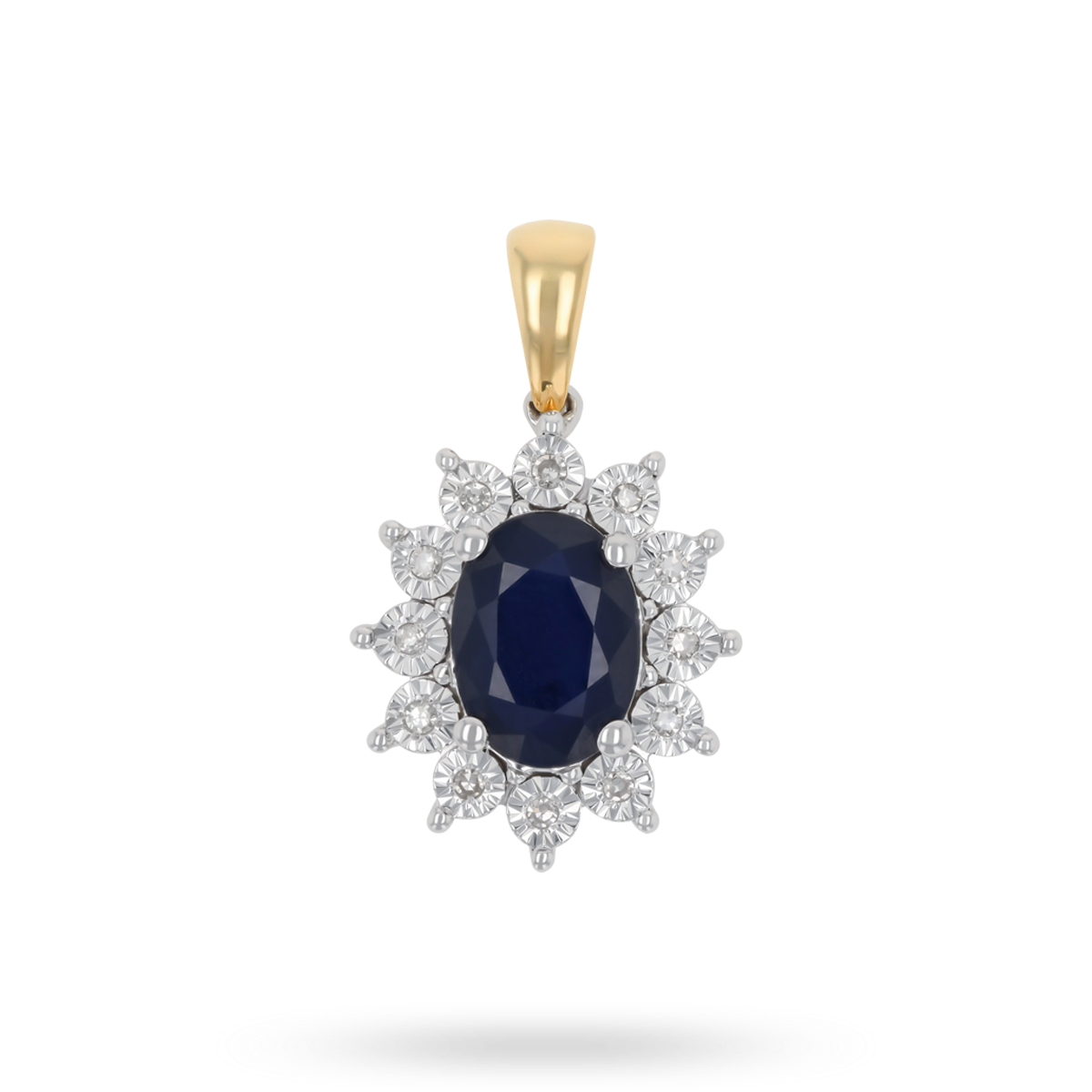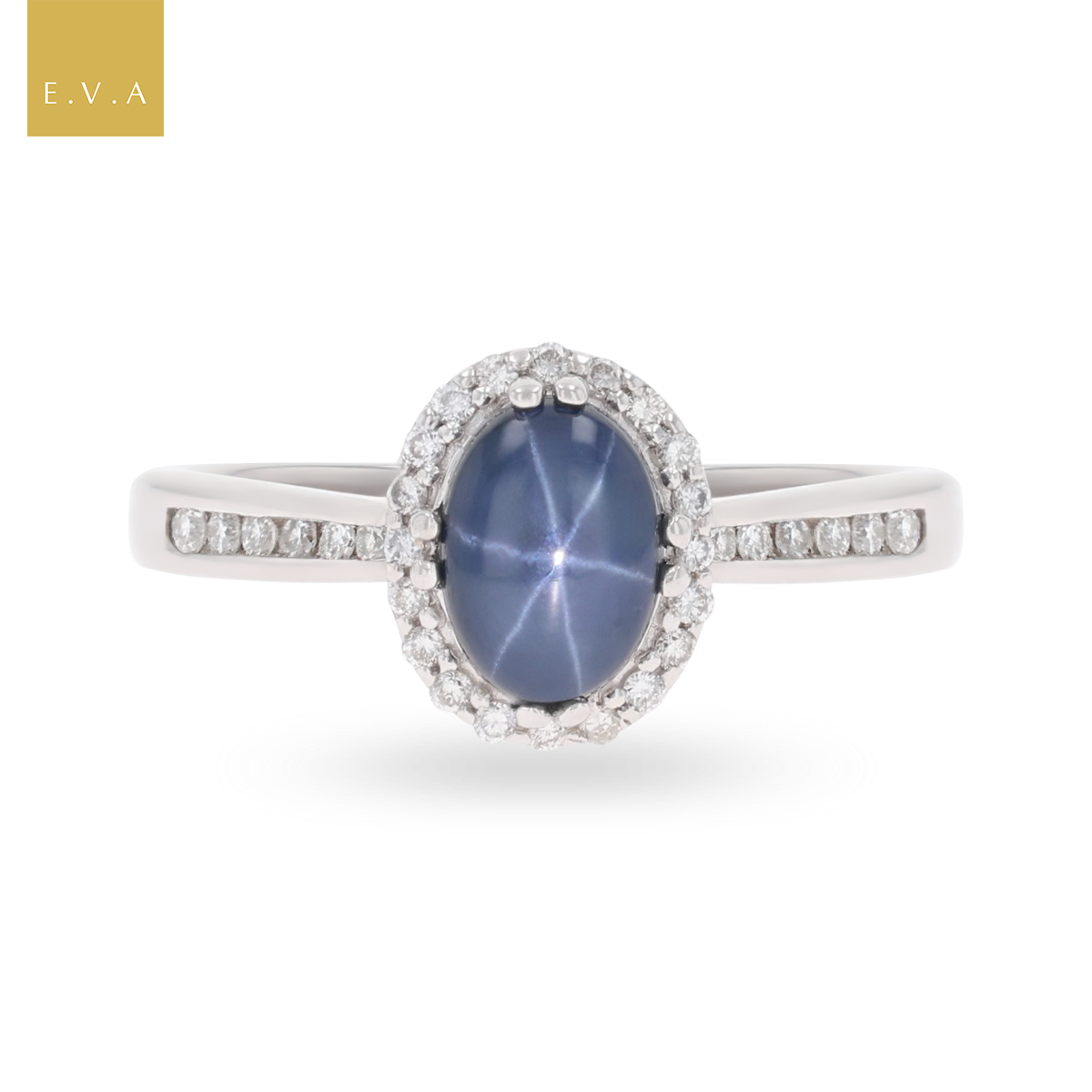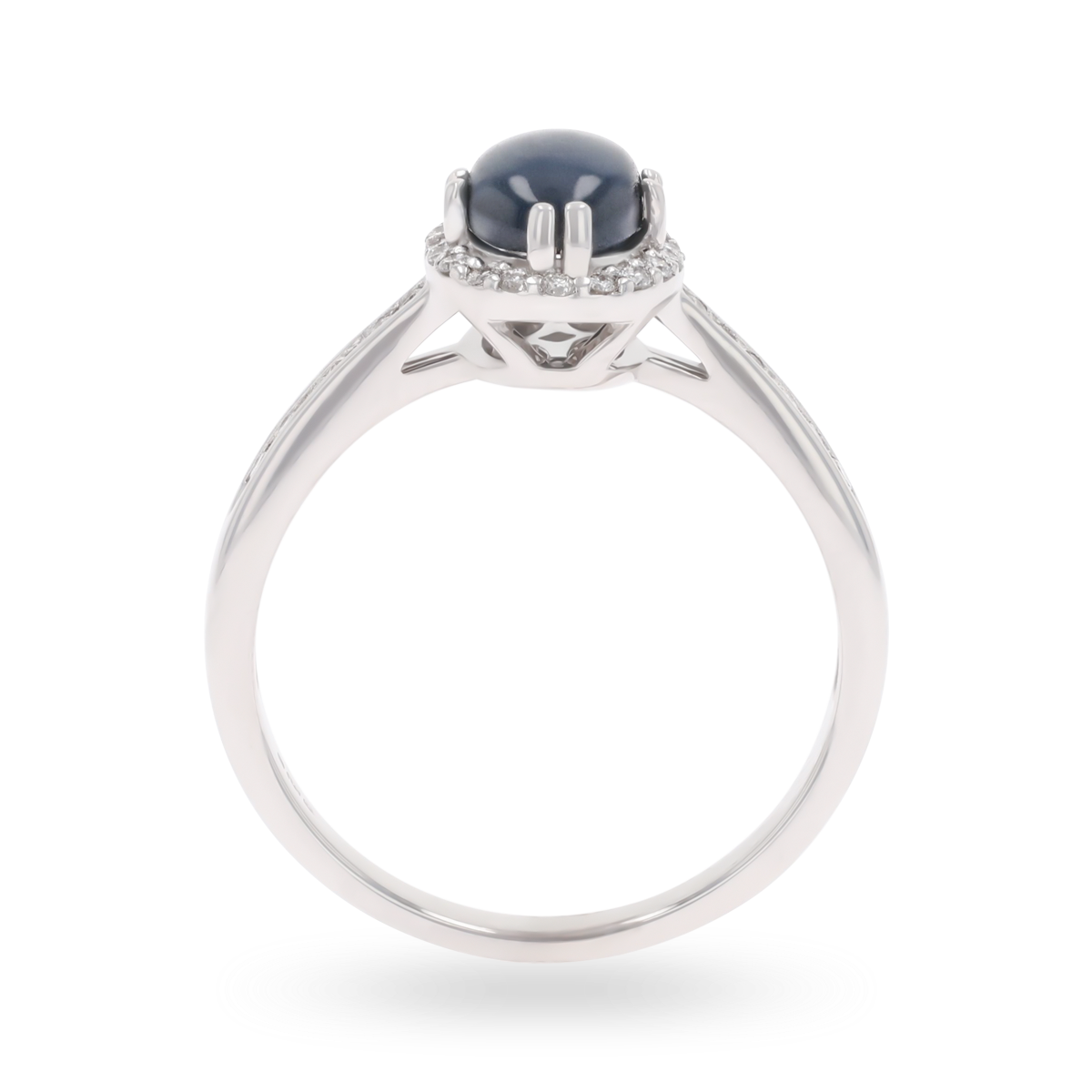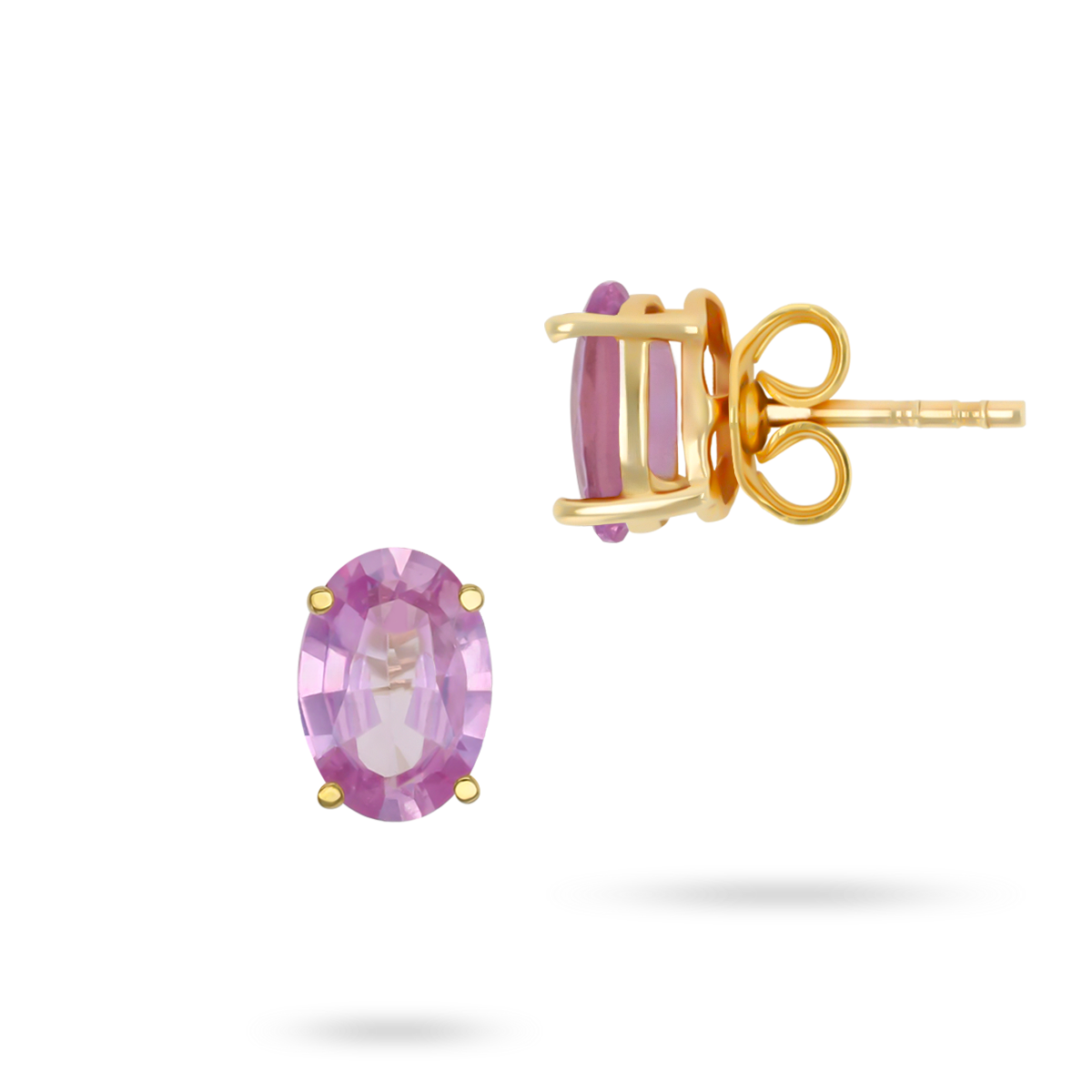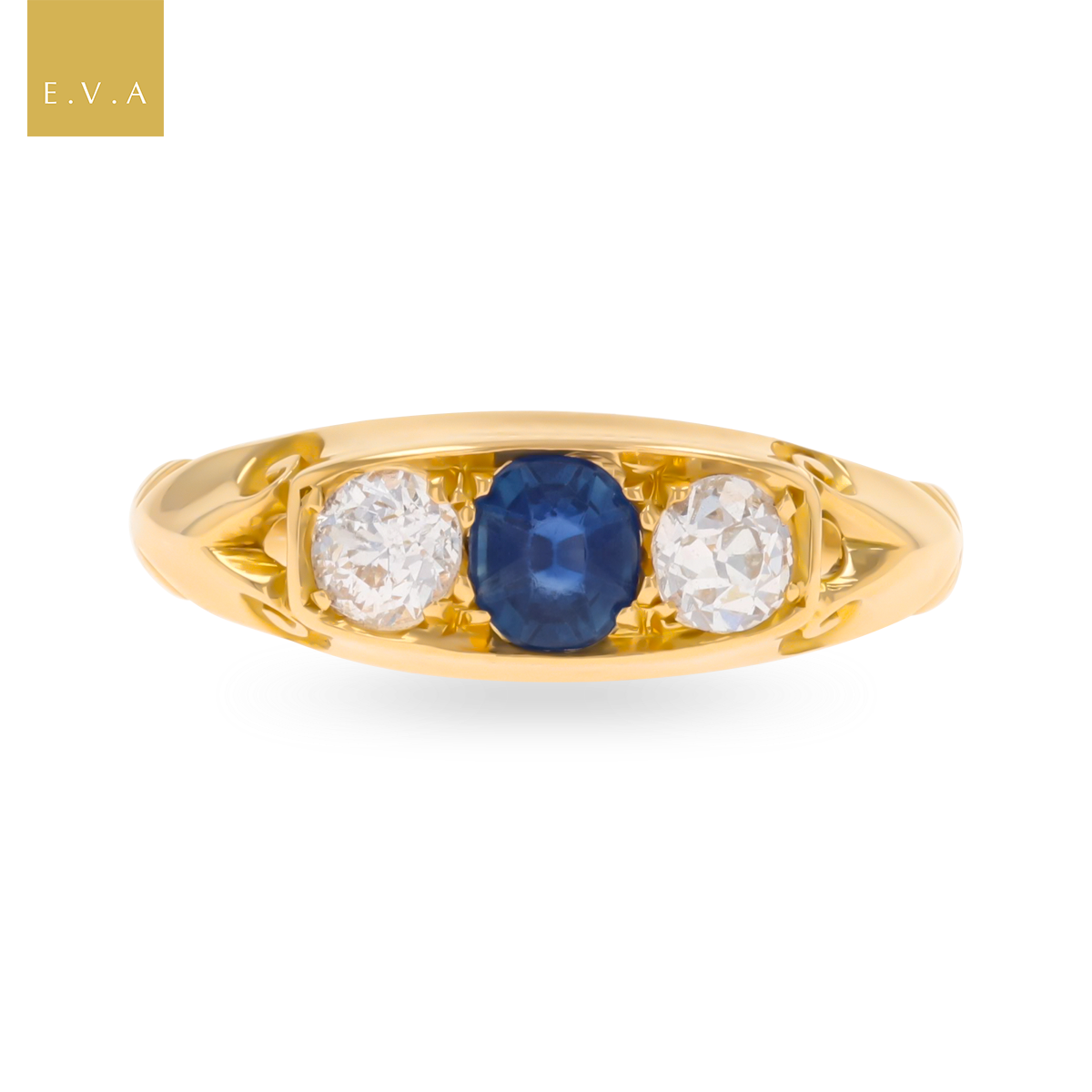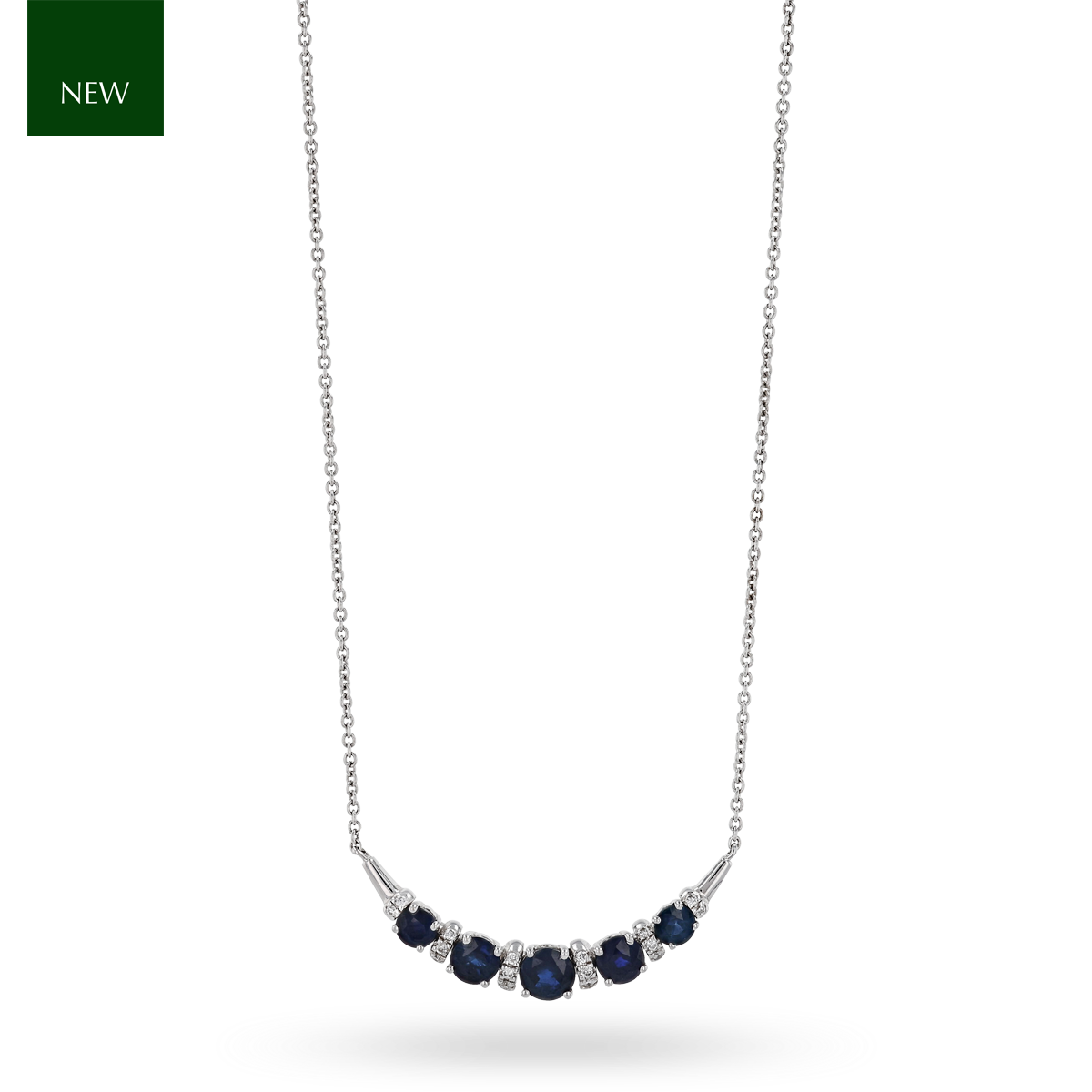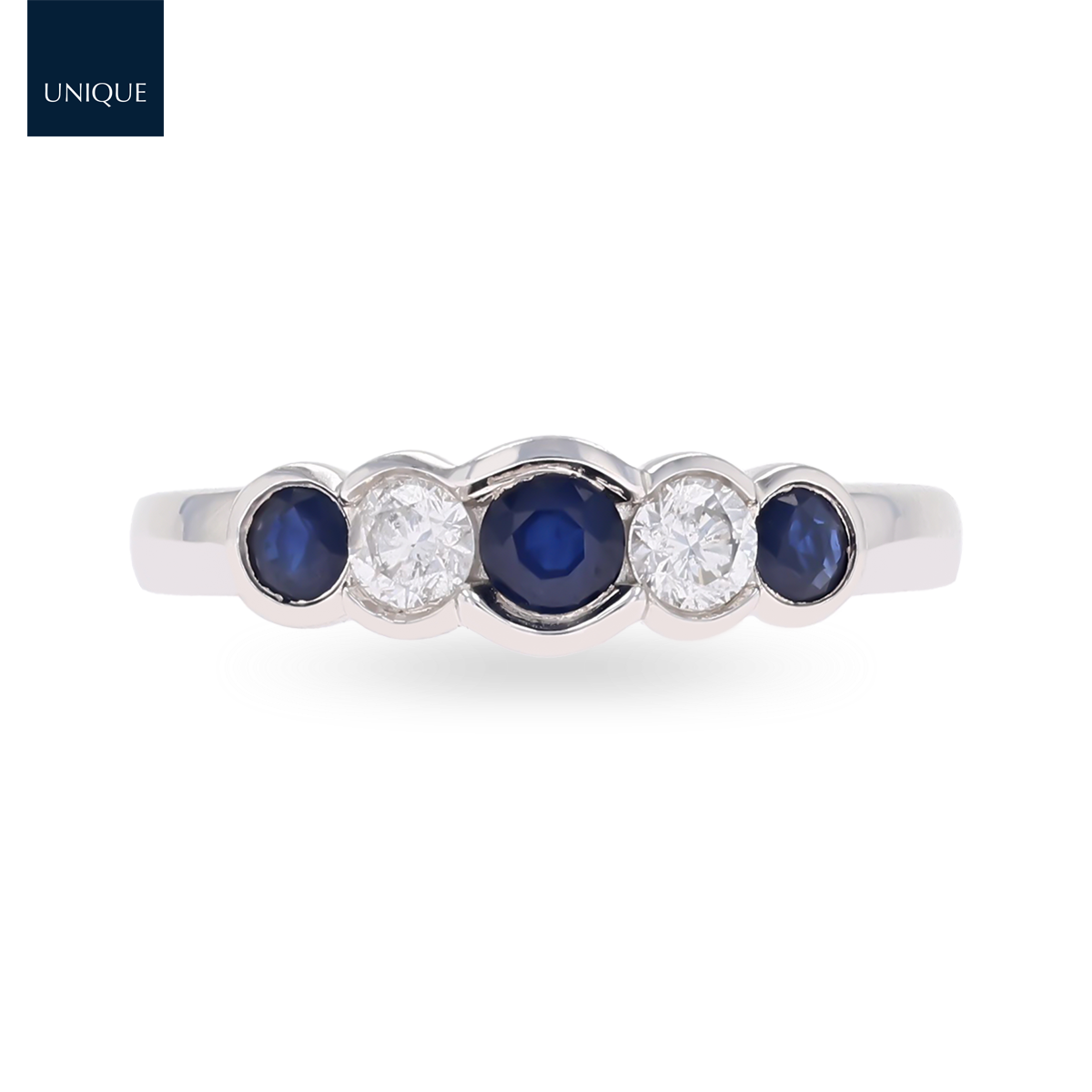The Colour of the Sky
What is Sapphire?
Sapphire, is part of the corundum family and has a composition of aluminium oxide. The gemstone occurs in a rainbow of colours, with varying tones and saturations, from: orange, yellow, white, green, blue, pink, purple and brown. Essentially, any colour apart from red, as this is more commonly known as the gemstone ruby. Generally, the term ‘Sapphire’ refers to the blue variety, which is coloured by Iron (Fe) and Titanium (Ti). All other colours come under the umbrella of Fancy Sapphires, with the colour as a prefix e.g yellow sapphire, green sapphire and etc. Depending on the saturation and intensity of colour, the gemstone ranges from transparent to translucent, and reflects a bright vitreous lustre.

18ct White Gold Sapphire & Diamond Circle Drop Earrings
Crystal Habit
The gemstone crystallises with a prismatic crystal habit, which is classified under the trigonal crystal system. It either forms a twelve-sided bipyramidal habit, or a six-sided barrel shaped crystal with flat basal pinacoid terminations. The crystal exhibits a hexagonal cross-section and displays parallel striations on the surface. Alternatively, sapphire can be found as broken fragments or water worn pebbles in alluvial deposits.

18ct White Gold Fancy Sapphire & Diamond Trinity Drop Necklace
Localities of Sapphire
Sapphire can be sourced and mined from multiple localities such as: Australia, China, Kenya, Madagascar, Mozambique, Myanmar (Burma), Nigeria, South Africa, Sri Lanka, Tanzania, Thailand & USA. The finest sapphires exhibit a high clarity and rich blue colour, which are most likely to be extracted from the Kashmir region in India, Thailand (Siam), Sri Lanka (Ceylon) and Myanmar (Burma). Another variety that commands a high premium, are padparadscha sapphires, which are rarely extracted from Sri Lanka and imbues a desirable blend of pink and orange.

18ct Yellow Gold Antique Sapphire & Diamond Navette Edwardian Ring
Under The Loupe: Inclusions
Sapphires showcase a vast scope of magical inclusions and some are even characteristic of certain localities. Here are just some of the inclusions detected in sapphires, from: angular/hexagonal colour zoning, two phase, silk (short, fine needle-like rutile), stress/healed fractures (appearance is similar to a fingerprint), mica flakes, feldspar, pyrite, apatite, zircon crystals with halos and negative crystals (the host materials rough form - essentially a sapphire crystal inclusion within a sapphire).

9ct White Gold Star Sapphire & Diamond Halo Ring
The Magical Phenomenon of Star Sapphires
Sapphires can exhibit an optical effect know as Asterism, which is more commonly traded under the name “Star Sapphires”. The reflection effect, relies on the magical rutile (thin, needle-like) inclusions, which occur in sapphire and are orientated in two or more different directions. The gemstone is then specifically cut en cabochon, whereby the inclusions are parallel to the base. Light is then reflected from each set of inclusions, exposing either a six-rayed or rarely a twelve-rayed star.

18ct Rose Gold Fancy Sapphire & Diamond Circle Pendant & Chain
Treatments
Majority of the sapphires you will come across, have been heat treated. Heating is a traditional and widely accepted treatment, used on a multitude of gemstones to improve or change a gemstones colour. For example; Pale sapphires with little Iron (Fe) present, can be heated to increase the blue colour, whereas dark sapphires with too much Iron (Fe) present, can be heated to decrease the blue colour.
Heat treatment in corundum, is also used to improve a gemstones clarity. For example; the presence of silk (short, fine needle-like rutile inclusions) can be removed, when heated to high temperatures and cooled rapidly.

18ct White Gold Sapphire & Diamond Cluster With Diamond Set Shoulders Ring
Diffusion is a treatment that can be applied to sapphires, to improve their colour, there are two types: surface and lattice (bulk). It is important to acknowledge, that surface diffusion is a non-permeant treatment, as the enhanced colour remains only at the surface of the gemstone and can be polished out. Whereas, lattice diffusion is a permeant treatment, that penetrates deeper into the gemstone and is sometimes used to imitate the appearance of padparadscha sapphires.
Colourless to pale yellow sapphires can be irradiated to a deep yellow to brown, pink sapphires can be irradiated to orange and blue sapphires can be irradiated to green. Irradiation is a non-permeant treatment and the colour will fade, if exposed to strong light over time.
Fracture filling is a non-permanent treatment, applied to sapphires to improve its colour and clarity. Sapphires are heated in borax or lead glass, whereby surface reaching fractures (cracks and fissures) are infilled, visually reducing the appearance of the inclusions and improving the durability of the the overall stone.

18ct White Gold Sapphire & Diamond Flower Toi et Moi Ring
Synthesis & Simulants
Sapphires can be synthesised via two methods: Verneuil (flame-fusion) and Flux-Melt. Verneuil sapphires tend to have a higher clarity, than flux melt sapphires. The inclusions present in these two methods of synthesis, vary from each other and from natural sapphires. The diagnostic inclusions present in natural gemstones, are usually absent and this can be identified with a 10x loupe and microscope. Synthetic sapphires are lab grown through manufactures such as: Biron, Chatham, Ramaura, just to name a few.
Sapphires can commonly be mistaken for blue tourmaline, blue spinel, blue artificial glass, iolite, tanzanite, synthetic blue spinel and corundum-corundum doublet. These can all be identified through the use of gemological testing and observations.

18ct Yellow Gold Oval Shaped Peach Sapphire & Diamond Cluster Ring
The Lore of Sapphire
Sapphire is the material used to celebrate the 5th, 45th & 75th wedding anniversary, as well as being the birthstone of September, it is also the zodiac birthstone of Virgo. Sapphire derives from the Latin word ‘saphirus’ and Greek word ‘sapheiros’, which simply translates to the colour blue. This gemstone is referenced frequently throughout Ancient Literature. From being the celestial material given to Moses, that sacredly held the inscription of the Ten Commandments. The ancient Persians, who believed the earth to rest on a giant sapphire, which was then reflected in the sky. To Helen of Troy, who was thought to possess a large star sapphire, the reason behind her desirability.
In most recent times, sapphire has come to symbolise wisdom and creativity. Orange sapphires symbolise courage and togetherness. Yellow sapphires symbolise wisdom and prosperity. Green sapphires symbolise peace and honour. Pink sapphires are compared to a lotus flower, which symbolises beauty, wisdom and sincerity. Purple sapphires are thought to symbolise intuition and clarity.

18ct White Gold Fancy Sapphire & Diamond Circle Pendant & Chain
Care
💎 Hardness: 9 | 💪 Toughness: Excellent | ⚖️ Stability: Very Good
💚 Low Caution: A very durable gemstone, generally it is safe to use in; 🫧 Jewellery Dips, 🔊 Ultrasonic, 🌪 Steam Cleaners.
🔬Gemmological Observation: Corundums are a very durable gemstone. However, if lead-glass filled or heavily fractured, you will need to ⚠️ avoid: 🧪 Acids, ☀️🔥 Direct Heat, 🔊 Ultrasonic, 🌪 Steam Cleaners.

Explore our Wordfinder, A Glossary of Terms, to discover the meaning behind unknown names, terms or phrases - used in this article.
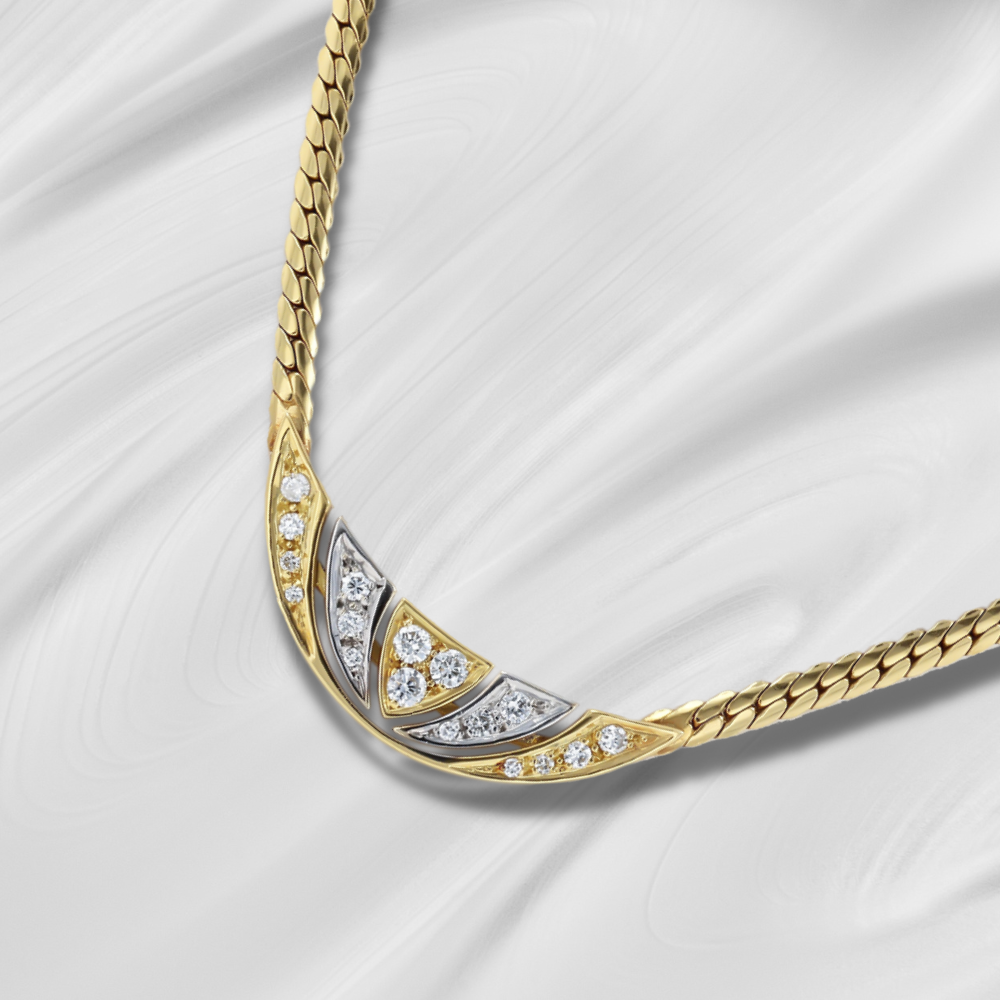

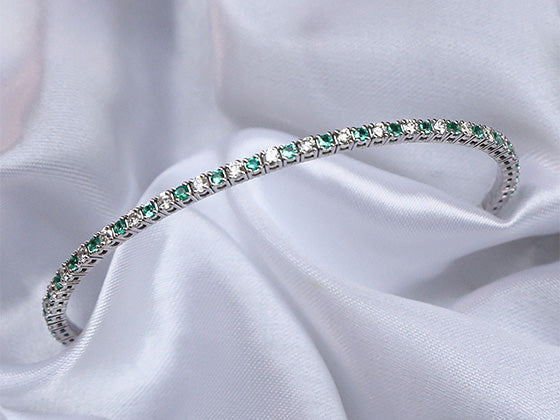

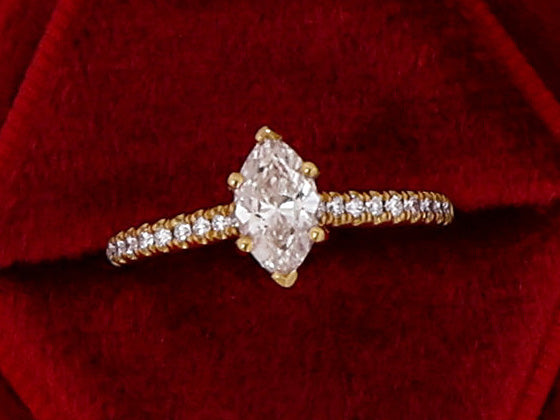
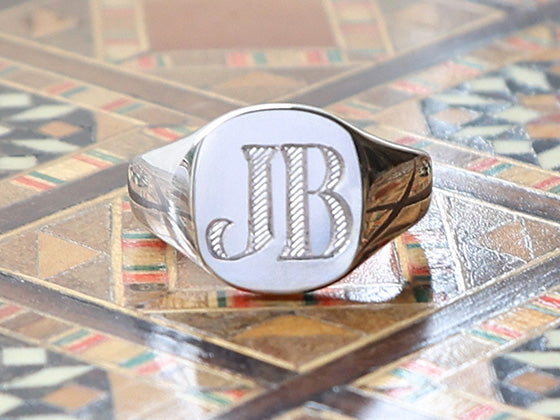
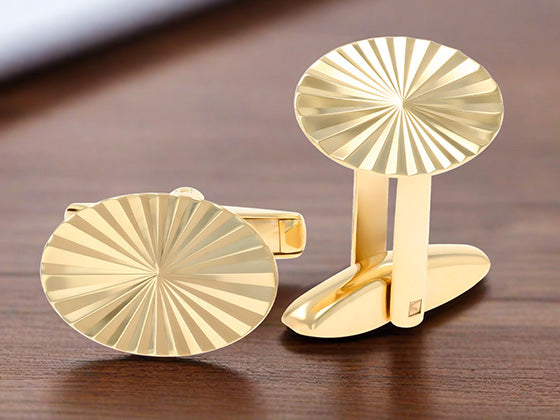
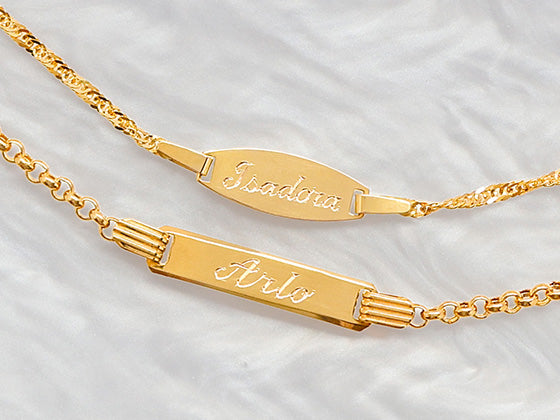
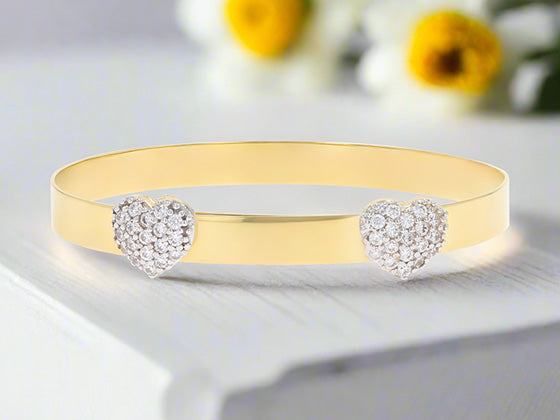
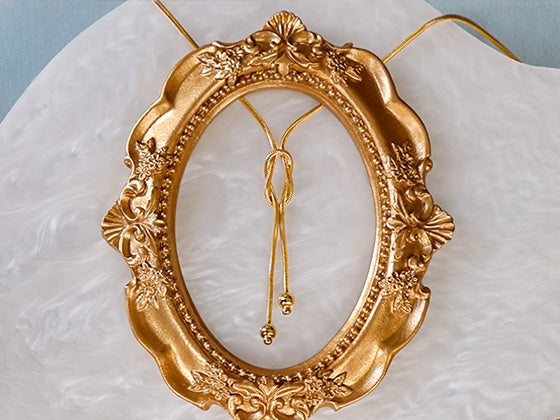
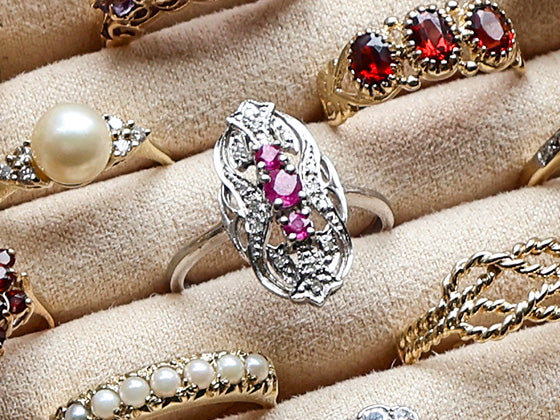
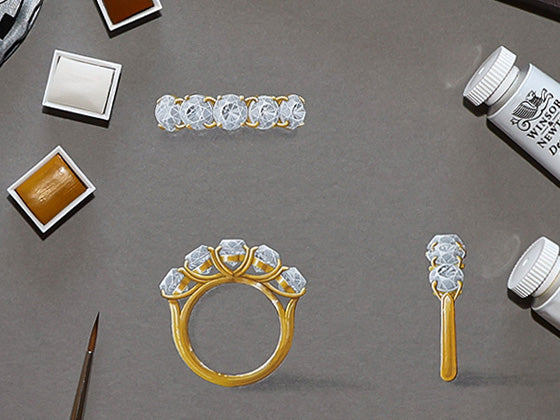
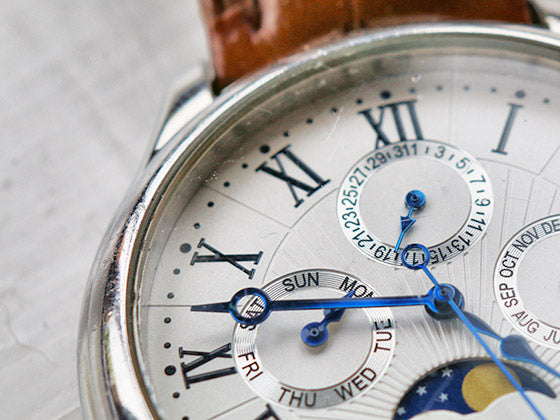
 Contact Us
Contact Us
